Text

Been watching/ rereading dungeon meshi. This was the only thing my brain will let me produce for it.
6K notes
·
View notes
Text
Writing Romance: Crafting a Likeable Asshole Love Interest

I’ve talked before about how to write a likable asshole love interest in another post, but in that post, I was more dissecting why it works for some characters, and not for others. But I didn’t really talk about the step-by-step process to pull a Frankenfurter and build a man worth drooling over. This process of course can also apply to icy bitch love interests, but the repugnant male is more common.
This is a bit of a two-for-one, cuz it’s also a bit of a walkthrough for Enemies to Lovers, but we’re more focused on building the Jerk Love Interest. It just so happens that doing so also helps with writing a slow-burn romance.
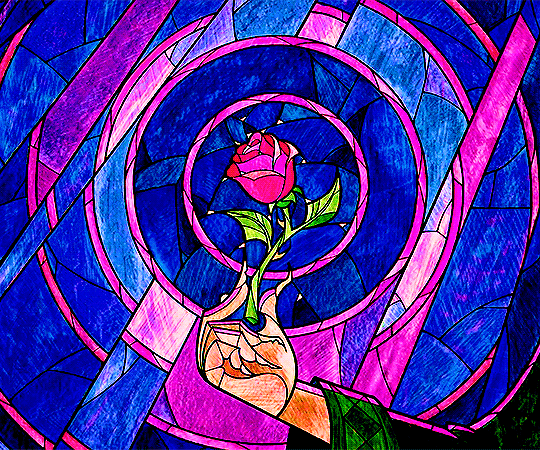
Step 1: Find the Source
Generally speaking, most people are not horrible jerks in a vacuum. Their horribleness stems from something, but so too does their good side. I covered this when talking about Zuko and how to write a redemption arc, but since that applies to this trope as well, I’ll cover it again.
The Ghost - Also called “The Scar”, this was a defining moment in the character’s backstory that happened before the story proper that defined who they became. This is the source of the trauma from whence the bastard sauce flows. For Zuko, it was the literal scarring of his face for questioning an adult, being banished by his own father, and the subsequent loss of honor. For Amity, it was being forced to stop being friends with Willow by her parents. For Bakugou, his Ghost is a mixture of teachers and adults inflating his ego as a small child, and implications of physical and/or verbal abuse from his parents that shaped his ‘Might makes Right’ world view. This is the one thing I forgot to mention in the Zuko post, so I’m glad I got a chance to include it here.
The Want - This is simply put, what the character wants. Zuko wants his honor back. He doesn’t care how he gets it, just that he gets it. If he didn’t have to bother a twelve year old for his want, I doubt he would have even glanced at the Avatar if it wasn’t related to his motivation. Amity aspires to join the Emperor’s Coven, maintain her status as valedictorian of Hexide, and keep her parents happy. Bakugou wants to be the Number 1 Student, eventually become the Number 1 Hero, and All-Might’s successor. I haven’t been keeping up with the manga, so idk if his ambitions have changed since his character development, but we’re focused on the starting point. This is what motivates your rancid romeo at the start of the story.
The Need - This is what the character requires to complete their arc. There are two types of Needs. A cooperative need is a need that feeds into the want. It’s like a step ladder to get the character from point A to point B. The other type is a combative want. This requires the character to either have a major change of self or even an entire change of want in order to be satisfied. In the simplest terms, in a cooperative need, the need leads to the want, in a combative need, the want leads to the need. Zuko Needs to determine his own destiny instead of living for other people, and to realize that nobody can take his honor away from him except himself by his own actions. Amity Needs to realize that she doesn’t have to be who her parents want in order to have a successful life, and she’s more than capable of determining who her real friends are. Bakugou Needs to realize not only that there’s more to life than being #1, but that other people are not inferior to him just by virtue of their quirks or aspirations in life. With each of these examples, the Need is combative. As an example of a Cooperative Need, I wrote a character who wanted to be respected by her peers. She believed they didn’t respect her because they saw her as weak, so she becomes determined to prove she’s not a pushover. In truth, they didn’t respect her because of her flighty and impulsive behavior causing problems for them. Her Need, to realize that her actions have negative impacts on those around her, directly feeds into and leads to her Want, to be respected by her peers. While the combative need is clearly still more common in rancid romeos, I still figured it was worth making sure people had an example of both.
The Lie - This is the faulty belief held by the rancid romeo about how the world works, their place in the world, or who they truly are. For Zuko, he believed that he lost his honor. That only capturing the Avatar can restore his honor. In truth, his honor was always there, and Zuko always chose the honorable path when given the choice. Amity believes that hard work, good grades, and results are what matters. So when somebody cheats to get ahead, Amity takes this very personally because it violates her world view, causing her to act more hostile to Luz and Willow. Bakugou believes that he is the single greatest fledgling hero ever, so when he gets to UA and sees Todoroki freeze an entire building, he has an existential crisis that results in a one-sided rivalry, wherein beating Todoroki is the only way to prove to himself that he IS in fact the best fledgling hero in the world, and he can return to his previous world view assured of his own supremacy.
The Truth - Just as it sounds, the Truth is the cure to the Lie. Whatever misgiving the rancid romeo has about how the world works, their place in the world, or who they truly are, can be resolved by realizing the truth. The Truth manifests in the story as that sort of A-ha! moment for character. It’s the moment when they come to understand where they went wrong, and resolve to change. The Truth marks the epiphany, and the transition from Want to Need in the Arc. For Zuko, the Truth moment comes when Zuko confronts his father on the Day of Black Sun and tells him to eat a dick for being a shitty father, and he’s gonna run away and join a Gaang. For Amity, the Truth is a gradual thing, but comes the most clearly in the moment when she and Luz get trapped in the library. Up to that moment, Amity couldn’t really figure Luz out, and she began to realize her own actions weren’t exactly honorable either. After this episode, we start to see a quiet, distant, and reflective Amity who’s clearly rethinking her values. For Bakugou, the Truth really comes to a head when he discovers that Midoriya will inherit All-Might’s quirk and be his successor. I’m not caught up on the Manga, so while I’m aware that Bakugou has started to really apologize to Deku and is starting to work on redeeming himself, I’m not up to date on Bakugou’s redemption arc. However, one could argue Bakugou’s first Truth came when he saw Todoroki freeze an entire building, had an existential crisis, and then realized he was just a big fish in a little pond, and his poor little ego starts lashing out violently because he doesn’t know how to respond to this shift in his world view. He’s not the greatest thing since sliced bread, and he’s not sure what to do about it.

Step 2: A Beastly Start
Beauty and the Beast lives and breathes on this trope, and this first step is why. Beauty and the Beast bases its entire story on how appearances can be deceiving and first impressions don’t always paint the whole picture. In order to write a successful Jerk Love Interest, the romantic lead AND the audience both need to see the love interest in a negative light. The love interest needs to really get off on the wrong foot with both the romantic lead and the audience. Nothing about them should be romanticized or made to be sexy. Because that’s not supposed to be the romantic lead’s first thoughts. Kirishima dismisses Bakugou as a mindless brute, Luz is too busy being angry that Amity is a bully to notice how cute she is, Emma immediately sees through Hook’s lies and leaves him to be eaten by ogres, and Sansa is literally afraid of the Hound when she first meets him. A meet-cute, this couple is not. Sometimes, the romantic lead and the audience meet the love interest at different times. Bakugou is introduced as a deuteragonist to main character, Midoriya, and immediately sets himself up as a colossal shit weasel. But once he gets to UA, he repeats this character establishing behavior on day 1 to ensure that everyone in the class (Kirishima included) is completely convinced that this man is made of 100% rotten bastard sauce. However, while you want your rancid romeo to be disliked at first, you do eventually want your romantic lead and audience to warm to them. To do that, the rancid romeo can’t cross the line to hardcore villainy. Anything that would warrant a trigger warning should be immediately discarded as not viable. Some rancid romeos can get away with more severe bastardness, as long as it’s not directed at the romantic lead. Bakugou probably starts off the worst of the characters I’ll use as reference, as in the English Dub, he tells the hero to kill himself. Needless to say, Bakugou started off extremely unpopular as a result, and many (but not all) fans dislike pairing Bakugou with Deku because of this past toxic bullying behavior. But while Bakugou was a horrible bully to Midoriya, the protagonist, he was only ever really surly and unpleasant with Kirishima in their first few encounters, but he’s not a bully to Kirishima like he is to Midoriya. Kirishima’s first impression of Bakugou is that Bakugou is a crazed maniac and he’s intent on killing their fellow classmate in what’s supposed to be a simple drill. Not exactly a swoon-worthy first impression.

Step 3: The Beauty Within
This is the first glint of any goodness in the character. Sometimes this is more overt, like when Luz finds Amity reading to children, but often the first glimmer is smaller. Easy to miss, even. When Sandor Clegane wraps his cloak around Sansa, he does so without being asked. He is simply acting on his personal code of honor. We the audience don’t think much on this because we would assume most people in this situation would do that. So it’s no big deal, right? But then, you look at Sandor’s character and it becomes sort of strange. Why would someone so blunt, harsh, and bitter be so quick to do the noble and just thing like that? It’s sort of sneaky until the audience stops to think about it. Amity comes to understand Luz when Luz explains how hard she has to work to learn even really basic spells, and Amity, for all her ego, respects the work that Luz has to put in and undoes the binding ritual that would have forced Luz to stop learning magic. Bakugou actually has two first glimmers. The first is right before he’s attacked by the sludge monster. His friends are trying convince him to sneak into a bar and hit on chicks, and Bakugou immediately shuts it down because getting caught could hurt his academic future. Bakugou might run on Bastard Juice, but it’s Ambitious Bastard Juice. Like with Sandor, it’s an easy enough detail to overlook on a first viewing, but really shows what Bakugou values on further reflection. The second glimmer comes when Bakugou and Kirishima get to really interact with one another for the first time. When they get paired off during the USJ Attack, Bakugou doesn’t seem concerned with helping his classmates, focusing more on stopping the villains that have infiltrated the event. While again this seems to be cold and selfish, Kirishima realizes that what Bakugou’s not saying is that he’s not really worried about his classmates being in danger because he believes they can genuinely fend for themselves. It’s a round-about show of respect that Bakugou doesn’t think his classmates need him to rush in with a rescue. And that first spark of heroism and nobility inside of Bakugou is what convinces Kirishima to actively pursue a friendship with this abrasive and vulgar dumpster gremlin. This is the single most important step because this is what makes the asshole likeable. Bakugou may be many things: foul-mouthed, egotistical, narcissistic, elitist, and a bully, but Bakugou also has respectable qualities too. He’s a hard-worker, he believes in earning what you have, and doesn’t believe in cheating or shortcuts. In spite of all of his rotten traits, he has some damn respectable qualities as well, and this is merely the first chance to let the audience and romantic lead see a quick peak of this inner kindness. Likewise, Sandor Clegane is vulgar and cynical, but he kneels before his king, holds Sansa back from making a choice that would get her killed, and saves Sansa from being assaulted by a group of men. He may be surly, but he is also noble and honorable. Same with Zuko. He may be angry and selfish, but he keeps his word and makes honorable choices when given the chance. From this point in, use the blossoming relationship to expand upon this first spark, and turn the preview into a full display. This is the moment to show the audience and romantic lead that there’s more to the rancid romeo, and once they’ve seen that sneak preview, you’ve got to deliver more good qualities as we get to know the rancid romeo better. A sliver of good that never expands or shines any brighter is not a compelling rancid romeo, because eventually, the rancid part does need to lessen. Maybe not go away, sometimes that abrasiveness or jerk nature is part of a character’s charm, but by story’s end, they should be less of a jerk. Defecting to the good side doesn’t suddenly make Zuko any less of an awkward moody guy, it merely gives him a positive support system wider than just his amazing uncle. I mean, Zuko makes the gaang tea and tries telling them a joke. Seasons 1 and 2 Zuko never would have tried to tell anyone a joke, and the only other person he ever made tea for was his uncle.

Step 4: An Act of Kindness
Now that your rancid romeo has displayed some level of inner goodness or a trait worthy of admiration, it’s the romantic lead’s turn to make the first move. This is because while the rancid romeo is capable of kindness and love, they’re usually too damaged to make the first move. Thus, the romantic lead must take the first step forward and reach out to the love interest. This comes in varying stages depending on the story. After Covention, Lost in Language has Luz hoping that she and Amity can become friends, and she even protects Amity from a cruel prank by her older siblings. By episode’s end, Amity and Luz aren’t friends per se, but they understand each other better than they did before, and Amity really starts to rethink how she views not only Luz, but herself as well. After the USJ attack, Kirishima reaches out to Bakugou during the Sports Festival Arc, volunteering to be Bakugou’s teammate, and when Bakugou calls him a mean nickname, Kirishima merely corrects him. In the simplest terms, this is the moment when the romantic lead extends the olive branch to the love interest and offers to shift the dynamic from angsty stranger with a secret heart of gold to tentative friendship with a shaky foundation.

Step 5: A Kindness in Turn
Now that the romantic lead has made a gesture to the damaged goods that is the love interest, they need to react appropriately and return the favor. Two characters in a relationship are effectively in a dance together. If only one person is doing all the work while the other person stands there like a log, that’s not really two partners in motion. To truly perform the dance of love, both the romantic lead and the rancid romeo must give and take, and this is when it’s the love interest’s time to take the lead in the dance. Failure to meet this step means that your ship cannot and should not hit any stage after it, as a rancid romeo who never does anything for the romantic lead is not appealing. It doesn’t even need to be something big. Bakugou’s kindness in turn for Kirishima is just offering to tutor him. It’s hardly a grand romantic gesture, but considering Bakugou doesn’t tutor anyone else and doesn’t really like most people, it says a lot that Bakugou would even bother taking the time to help another student with their studies.

Step 6: There’s Something There
Now that both your romantic lead and your rancid romeo have made an effort to do things for each other and bond, we formally shift from two awkward acquaintances to legitimate friends. If the dynamic is more straight from Enemies to Lovers, then either this stage is skipped entirely, or instead of friendship, this stage is full of playful banter, snarky compliments, and the beginning stages of a crush. As both characters have now found something in the other worth admiring or being interested in, this stage serves to deepen the bond before the actual romantic elements start to seep into the relationship. This could be as significant as having a heartfelt talk about deeply seeded trauma, or as simple as grabbing a beer after work. This can also be the point when past traumas are worked through, such as taking down emotional walls, or being supportive of each other’s goals.

Step 7: Romance Starts to Blossom
Once the pair have started to enjoy each other’s company and found things to respect or admire in each other, all of that time together will eventually lead to romantic feelings starting to form. This is the stage when crushes comes into play. Longing gazes, stolen glances, blushing and flustering, romantic tension. It all builds up to one thing: Puppy Love. While friendship is not a mandatory step in the Enemies to Lovers trope, it can be useful as a bridge from begrudging respect to genuine admiration. In the case where Enemies to Lovers is spicy and heated, such as the relationship between Anthony and Kate in season 2 of Bridgerton, this is the stage when they start to realize and/or admit their growing attraction to one another. For Lumity, we see Amity catches feelings first by constantly blushing around Luz, but Luz does start to reciprocate those feelings, leading up to both girls trying to ask each other out.

Step 8: An Act of Love
This is the point in the story when the rancid romeo reaches the Aha! epiphany moment of their redemption arc, and transitions from Want to Need. This is the moment when they realize they were wrong and make a grant gesture. As not all love stories are romances, it doesn’t necessarily have to be an act of love or a grand romantic gesture, it can also be a grand gesture given their personality. Bakugou accepting Kirishima’s hand in Kamino or giving him the pep talk needed to realize Red Riot Unbreakable are two key moments for the Kiribaku ship because Bakugou is displaying uncharacteristic trust and interest in someone other than himself. As such, Bakugou accepting help from Kirishima and bothering to encourage Kirishima to rise above his insecurities are massive things for Bakugou. For Amity and Luz, the big moment came when Amity stood up to her own mother to protect Luz, as fearing her mother is a huge part of Amity’s trauma and issues. However, unlike step 7 which can only exist after steps 3-6, step 8 can really happen at any point. This is merely the turning point in the rancid romeo’s personal arc, and in some romances, the rancid romeo needs to reach this turning point before step 6 or 7 can even happen. Many Zutara shippers would argue that Zuko and Katara’s relationship would fall under this purview, as either of them having any romantic feelings for each other would only be possible after Zuko defected to the good side and turned against his father. However, the Act of Love doesn’t have to be the same thing as their personal turning point. Zuko’s turning point (defying his father in Day of Black Sun) is distinct from Zuko’s act of love (helping Katara avenge her mother in The Southern Raiders). Likewise, Bakugou’s act of love (accepting Kirishima’s hand in Kamino) is distinct from his turning point (apologizing to Deku for being such a shithead).

Step 9: True Love
Now that the rancid romeo has made a noble sacrifice and faced a major hurdle in their redemption arc, they’re finally ready to receive and return the love of their romantic lead. They have overcome the source of their trauma and grown to properly understand their own thoughts and emotions to better display and act upon their own feelings honestly. They are finally in a good place to truly love and be loved by another. It is worth keeping in mind that love and attraction are not the same thing. Romance blooming in step 7 is more the baby steps. The crushing and the blushing and the awkward glances. This is the real deal. True love. I’m talking one person’s brushing their teeth while the other’s on the toilet level of comfort with each other. They have truly come to understand and appreciate one another on a level so intimate that they support and care for one another unconditionally. By this point in the story, the Rancid Romeo’s redemption arc is almost certainly finished. They’ve gotten closure on their baggage, and have the emotional and mental capacity to give their partner the love and affection that they deserve. It is only by this point (except in the case of arranged marriage narratives) that Married Ever After and/or Babies Ever After can even be considered as a possible ending to the romantic storyline for the characters.
588 notes
·
View notes
Text
I couldn't Finish One Episode of Netflix's Avatar Reboot
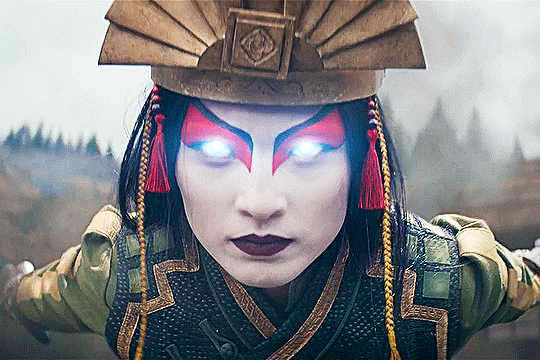
I went into this show optimistic. I really hoped it would be fun and enjoyable. Instead, what I ended up with was just tedious. I got about 37 minutes into the first episode before I'd had enough, turned it off, and decided to rewatch the animated version instead. I get that this show wanted to be a gritty dramatic version of the show, but it didn't really succeed. Okay, actually seeing the Air Nomad Mass Unaliving was certainly darker than anything the cartoon showed. But in the process, everything else about the original was scrubbed away. Every single actor was wooden and stiff. Aang and Gyatso's teasing around is said with as much emotion as Zuko uses when scolding his crew. There is no emotional weight to any character's dialogue. And the jokes are horrible. There's a moment where Aang just repeats the word 'Sky Bison' over and over again. Which seems like very juvenile humor. I thought this was supposed to be the gritty dramatic adult version, so why the juvenile humor? Pick a tone and butcher it. And Gramgram really put the nail in the coffin. She just starts reciting the show's opening monologue, Aang runs out of the room, and Gramgram keeps expositioning to the Waterbenders in the room like Aang didn't even leave. And then Aang talks about how heartbroken he is with the exact same tone of voice he used when joking with Gyatso because tone is dead, apparently. At which point, I promptly turned the show off. I expected it to be different, but I was just bored. In its attempt to be darker and more mature, the show missed the human core that made the original so charming, which was the warmth of the characters. Without it, it just feels soulless and lifeless. At the same time, the original actually feels more mature than this version because there, emotions had weight and value. Worse still, it wastes so much time expositing so many things that the original got across painlessly and seamlessly through natural dialogue. Honestly, if Netflix had just done the effortless braindead thing and just made a shot-for-shot line-for-line remake, it would have at least been entertaining. The actors would have at least shown an ounce of emotion. I'm certainly not impressed. I'd rather watch season 2 of Legend of Korra on repeat than episode 2 of the Netflix reboot.
37 notes
·
View notes
Text

I admit it. These two triggered my shipping reflexes so hard that I forgot that Alastor is AroAce.
2K notes
·
View notes
Text
I admit it. I ship it.
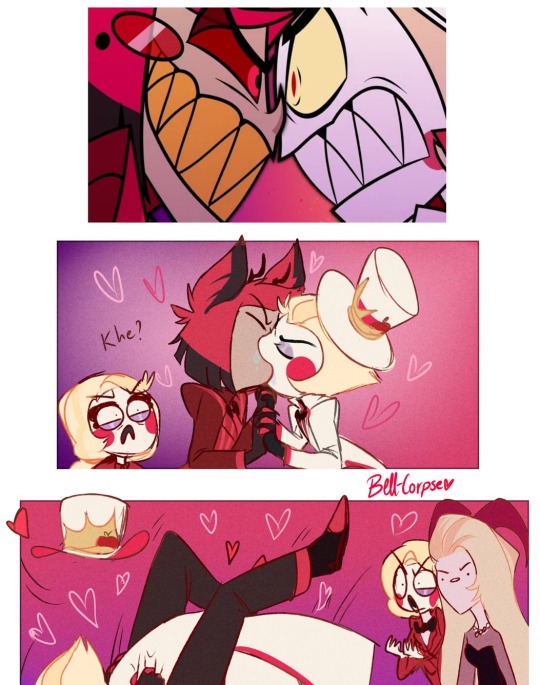
via @bell-corpse on twitter
7K notes
·
View notes
Text
How to Play the Ultimate Dark Mage in DnD 5e
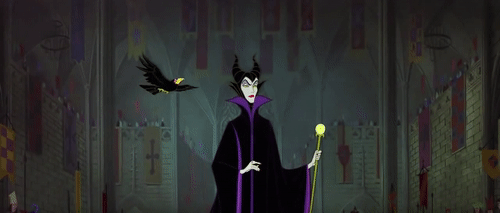
With Halloween right around the corner, I thought I'd delve into an idea I don't see talked about very much: building the ultimate black mage in DnD. For this build, we're not trying to be the best necromancer, or the best damage dealer. What we want is to find the build that grants us the widest arsenal of as many dark magical powers as possible. In order to give the Sorcerer a fair chance, we're going to homebrew to grant the Sorcerer 25 spells known instead of 15, otherwise there's no chance the Sorcerer is going to win.

DARK MAGIC SPELL LIST
NECROMANCY
False Life (Artificer, Sorcerer, Warlock*, Wizard, Death Cleric, Grave Cleric)
Animate Dead (Cleric, Warlock*, Wizard, Oathbreaker Paladin)
Speak with Dead (Bard, Cleric, Wizard, Undead Warlock, Undying Warlock)
Spirit Shroud (Cleric, Paladin, Warlock, Wizard)
Summon Undead (Warlock, Wizard)
Summon Warrior Spirit (sorcerer, Warlock, Wizard)
Death Ward (Cleric, Paladin, Undead Warlock, Undying Warlock, Alchemist Artificer)
Spirit of Death (Sorcerer, Warlock, Wizard)
Antilife Shield (Druid, Death Cleric, Grave Cleric, Undead Warlock)
Danse Macabre (Warlock, Wizard)
Create Undead (Cleric, Warlock, Wizard)
Soul Cage (Warlock, Wizard)
Clone (Wizard)
NECROTIC DAMAGE
Chill Touch (Sorcerer, Warlock, Wizard)
Toll the Dead (Cleric, Warlock, Wizard)
Inflict Wounds (Cleric, Oathbreaker Paladin)
Wither and Bloom (Druid, Sorcerer, Wizard)
Vampiric Touch (Sorcerer, Warlock, Wizard, Death Cleric, Grave Cleric)
Blight (Druid, Sorcerer, Warlock, Wizard, Death Cleric, Grave Cleric, Oathbreaker Paladin, Alchemist Artificer)
Destructive Wave (Paladin, Tempest Cleric)
Enervation (Sorcerer, Warlock, Wizard)
Negative Energy Flood (Warlock, Wizard)
Circle of Death (Sorcerer, Warlock, Wizard)
Finger of Death (Sorcerer, Warlock, Wizard)
Symbol (Bard, Cleric, Druid, Wizard)
Abi-Dalzim's Horrid Wilting (Sorcerer, Wizard)
Power Word: Kill (Bard, Sorcerer, Warlock, Wizard)
SHADOW MAGIC
Darkness (Sorcerer, Warlock, Wizard, Land (Swamp) Druid, Oathbreaker Paladin)
Shadow Blade (Sorcerer, Warlock, Wizard)
Summon Shadowspawn (Warlock, Wizard)
Shadow of Moil (Warlock)
Maddening Darkness (Warlock, Wizard)
PESTILENCE
Acid Splash (Artificer, Sorcerer, Wizard)
Poison Spray (Artificer, Druid, Sorcerer, Warlock, Wizard)
Ray of Sickness (Sorcerer, Wizard, Death Cleric, Alchemist Artificer)
Tasha's Caustic Brew (Artificer, Sorcerer, Wizard)
Blindness/Deafness (Bard, Cleric, Sorcerer, Wizard, Spores Druid, Fiend Warlock, Undead Warlock, Undying Warlock)
Melf's Acid Arrow (Wizard, Land (Swamp) Druid, Alchemist Artificer)
Ray of Enfeeblement (Warlock, Wizard, Death Cleric, Grave Cleric)
Stinking Cloud (Bard, Sorcerer, Wizard, Land (Swamp, Underdark) Druid, Fiend Warlock)
Sickening Radiance (Sorcerer, Warlock, Wizard)
Vitriolic Sphere (Sorcerer, Wizard)
Cloudkill (Sorcerer, Wizard, Alchemist Artificer, Death Cleric, Land (Underdark) Druid, Spores Druid, Conquest Paladin, Undead Warlock)
Contagion (Cleric, Druid, Oathbreaker Paladin, Undying Warlock)
Disintegrate (Sorcerer, Warlock, Wizard)
Harm (Cleric, Druid)
FIENDISH MAGIC
Hellish Rebuke (Warlock, Oathbreaker Paladin)
Spirit Guardians (Cleric, Crown Paladin)
Summon Lesser Demons (Warlock, Wizard)
Summon Greater Demon (Warlock, Wizard)
Infernal Calling (Warlock, Wizard)
Planar Binding (Bard, Cleric, Druid, Wizard)
Summon Fiend (Warlock, Wizard)
Planar Ally (Cleric)
Tasha's Otherworldly Guise (Sorcerer, Warlock, Wizard)
ELDRITCH MAGIC
Eldritch Blast (Warlock)
Arms of Hadar (Warlock)
Hunger of Hadar (Warlock)
Edvard's Black Tentacles (Wizard, Great Old One Warlock)
CURSES & EVIL
Infestation (Druid, Sorcerer, Warlock, Wizard)
Bane (Bard, Cleric, Warlock*, Vengeance Paladin)
Hex (Warlock)
Tasha's Hideous Laughter (Bard, Wizard, Great Old One Warlock)
Bestow Curse (Bard, Cleric, Wizard, Conquest Paladin, Oathbreaker Paladin)
Dispel Evil & Good (Cleric, Paladin)
Hallow (Cleric, Fiend Warlock)
Insect Plague (Cleric, Druid, Sorcerer)
Eyebite (Bard, Sorcerer, Warlock, Wizard)
Flesh to Stone (Warlock, Wizard)
Power Word: Pain (Bard, Sorcerer, Warlock, Wizard)
MIND GAMES & NIGHTMARES
Mind Sliver (Sorcerer, Warlock, Wizard)
Cause Fear (Warlock, Wizard)
Dissonant Whispers (Bard, Great Old One Warlock)
Silvery Barbs (Bard, Sorcerer, Wizard)
Crown of Madness (Bard, Sorcerer, Warlock, Wizard, Oathbreaker Paladin)
Tasha's Mind Whip (Sorcerer, Wizard)
Antagonize (Bard, Sorcerer, Warlock, Wizard)
Enemies Abound (Bard, Sorcerer, Warlock, Wizard)
Fear (Bard, Sorcerer, Warlock, Wizard, Conquest Paladin)
Phantasmal Killer (Wizard, Hexblade Warlock, Genie Warlock)
Dream (Bard, Warlock, Wizard, Land (Grassland) Druid)
Dominate Person (Bard, Sorcerer, Wizard, Order Cleric, Trickery Cleric, Conquest Paladin, Oathbreaker Paladin, Archfey Warlock, Great Old One Warlock)
Modify Memory (Bard, Wizard, Trickery Cleric)
Synaptic Static (Bard, Sorcerer, Warlock, Wizard)
Mental Prison (Sorcerer, Warlock, Wizard)
Dominate Monster (Bard, Sorcerer, Warlock, Wizard)
Feeblemind (Bard, Druid, Warlock, Wizard)
Weird (Warlock, Wizard)

BEST CLASS FOR DARK MAGIC
BARD
Necromancy: 1
Necrotic Damage: 1
Shadow Magic: 0
Pestilence: 2
Fiendish Magic: 1
Eldritch Magic: 0
Curses & Evil: 5
Mind Games & Nightmares: 10
Total: 20 + Magical Secrets (4-6)
CLERIC
Necromancy: 5, 7 (Death & Grave)
Necrotic Damage: 3, 5 (Death & Grave), 4 (Tempest)
Shadow Magic: 0
Pestilence: 3, 6 (Death), 4 (Grave)
Fiendish Magic: 3
Eldritch Magic: 0
Curses & Evil: 5
Mind Games & Nightmares: 0, 2 (Trickery), 1 (Order)
Total: 19
Death: 26
Grave: 24
Trickery: 21
DRUID
Necromancy: 1, 2 (Spores)
Necrotic Damage: 3
Shadow Magic: 0
Pestilence: 3, 5 (Spores), 5 Land (Swamp), 5 Land (Underdark)
Fiendish Magic: 0
Eldritch Magic: 0
Curses & Evil: 1
Mind Games & Nightmares: 1, 2 Land (Grassland)
Total: 9
Spores: 12
Land (Swamp): 11
Land (Underdark: 11
SORCERER
Necromancy: 3
Necrotic Damage: 9
Shadow Magic: 2
Pestilence: 10
Fiendish Magic: 1
Eldritch Magic: 0
Curses & Evil: 4
Mind Games & Nightmares: 11
Total: 40
DIVINE SOUL SORCERER
Necromancy: 8
Necrotic Damage: 12
Shadow Magic: 2
Pestilence: 12
Fiendish Magic: 4
Eldritch Magic: 0
Curses & Evil: 8
Mind Games & Nightmares: 11
Total: 57
WARLOCK
Necromancy: 9, 12 (Undead)
Necrotic Damage: 9
Shadow Magic: 5/5
Pestilence: 4, 6 (Fiend), 6 (Undead)
Fiendish Magic: 6
Eldritch Magic: 3, 4/4 (Great Old One)
Curses & Evil: 6, 7 (Fiend), 7 (Great Old One)
Mind Games & Nightmares: 12, 14 (Great Old One)
Total: 54
Fiend: 57
Great Old One: 58
Undead: 59
WIZARD
Necromancy: 11
Necrotic Damage: 12
Shadow Magic: 4
Pestilence: 11
Fiendish Magic: 6
Eldritch Magic: 0
Curses & Evil: 6
Mind Games & Nightmares: 17
Total: 67

Not only does Wizard come out on top with an impressive 67 dark magic spells, it is the only class that can learn all 67 spells. The Warlock learns 15 spells and 4 Mystic Arcanum, plus a few more through Eldritch Invocations, Clerics prepare level + WIS so they'll never prepare more than 25, and we had to cheat to give the Divine Soul Sorcerer 25 spells, or else it only gets a measly 15 spells plus one spell based on the alignment of your divine bloodline. We're also cheating a little with the mind games and nightmares category as while mental manipulation is scary and evil, it isn't necessarily the stereotypical evil one invokes with a dark mage. Although Wizard is the clear winner, it's worth pointing out certain interesting data. The Undead Warlock is the master of Necromancy, with the Wizard close behind at 11, separated only by access to Death Ward. Warlock is also the master of Shadow Magic and Eldritch Magic, but that's kind of the Warlock's whole shtick. The Divine Soul Sorcerer is the master of Pestilence magic, making it a great fit for a Plague Doctor type character, as well as Curses & Evil magic, narrowly beating out the Fiend Warlock. The Wizard is the clear master of Mind Games & Nightmares, and the Wizard and Divine Soul Sorcerer are tied at using Necrotic Damage spells. Wizard and Warlock are evenly matched at wielding Fiendish Magic. While the Bard is pretty much restricted to curses and mind games, it is possible to build a bard that uses exclusively dark magic. They just won't be the greatest dark mage of all time. In terms of who wins the most categories, the Divine Soul Sorcerer wins Pestilence, Curses & Evil, and ties for Necrotic Damage. Without considering subclasses, however, Wizard wins Necromancy, Mind Games & Nightmares, and ties for both Fiendish Magic and Necrotic Damage.

THE BUILD
There are a few good choices for race when building the ultimate dark mage. The Fallen Aasimar's Necrotic Shroud feature adds proficiency bonus Necrotic damage to every attack while the necrotic shroud is active. They also get darkvision and resistance to both necrotic and radiant damage. The Dhampir not only gets dark vision, it lets you stop breathing and make vampiric bite attacks to regain hit points. Reborn are even harder to kill, with advantage against poison, and disease, resistance to poison damage, and advantage on death saves, on top of not needing to eat, drink, sleep, or breathe. But they don't get dark vision. And of course, the Custom Lineage can give your dark mage 60 ft of darkvision, and any feat, letting them take feats like Magic Initiate, Resilient (CON), Shadow-Touched, Eldritch Adept, and more. Ultimately, I feel that the Fallen Aasimar and Reborn are the strongest candidates as they are innately dark and creepy, whereas the Custom Lineage can be made dark and creepy. We'll treat this build as a Fallen Aasimar mostly because Reborns don't get darkvision and that is a pretty huge hindrance. Otherwise, we'd go with Reborn.
Haunted One is the darkest background possible and is also the default background of The Dark Urge in Baldur's Gate 3. We're going to ignore the background's options in order to take Intimidation to bully our way through the campaign and religion to study burials and undead. Since we know we're going Wizard, we'll also pick up arcana to study magic and medicine to study the body, blood, bones, organs, and everything else. However, if you want a sneakier dark mage, you could also go with Deception and Persuasion from our background to maintain a personable façade.

WIZARD
SCHOOL OF NECROMANCY
Of course, necromancy is our subclass of choice. The power to raise a stronger horde of undead and it not being tied to specifically Animate Dead does make the Necromancy Wizard pretty useful. And the Command Undead feature really makes the mastery of dark magic vibe feel earned. There is a case to be made for Evocation. The Overchannel feature that sacrifices HP for damage is very dark mage. However, one feature stacked against an entire subclass of dark magic is no real contest. So, we'll go with the School of Necromancy.
The School of Necromancy also has a feature called Grim Harvest, which heals the Necromancer any time they kill an enemy with a spell, and more-so if it was a Necromancy spell. The spells Wither and Bloom, Vampiric Touch, and Enervation each damage the target with Necrotic damage, then heal the caster by half the damage dealt. These two healing factors can stack, making these very useful spells, and Wither and Bloom and Vampiric Touch can be chosen as Signature Spell and Spell Mastery, giving your necromancer an unlimited use of a way to regain hit points, even if it's rather low. It's more effective as a means to patch oneself up between fights, killing a few squirrels or birds to regain hit points for no cost. A 1 level dip into Life Domain can not only give the Wizard Heavy Armor proficiency and access to the Inflict Wounds spell, it can also further boost the self-healing gained from these three vampiric necromancy spells. Although False Life is on the Wizard spell list, the Eldritch Invocation Fiendish Vigor can give your Wizard a way to spam False Life between every encounter, making them just a little less squishy.

SPELL LIST
C Chill Touch, Infestation, Mind Sliver, Poison Spray, Toll the Dead
1 Cause Fear, False Life, Ray of Sickness, Shield, Silvery Barbs, Tasha's Caustic Brew, Tasha's Hideous Laughter,
2 Blindness/Deafness, Crown of Madness, Darkness, Melf's Acid Arrow, Shadow Blade, Tasha's Mind Whip, Web, Wither & Bloom
3 Animate Dead, Antagonize, Bestow Curse, Enemies Abound, Fear, Speak with Dead, Spirit Shroud, Summon Lesser Demons, Summon Shadowspawn, Summon Undead, Summon Warrior Spirit, Vampiric Touch
4 Blight, Edvard's Black Tentacles, Phantasmal Killer, Sickening Radiance, Spirit of Death, Summon Greater Demon, Vitriolic Sphere
5 Cloudkill, Danse Macabre, Dominate Person, Dream, Enervation, Infernal Calling, Modify Memory, Negative Energy Flood, Planar Binding, Synaptic Static
6 Circle of Death, Create Undead, Disintegrate, Eyebite, Flesh to Stone, Mental Prison, Soul Cage, Summon Fiend, Tasha's Otherworldly Guise
7 Finger of Death, Power Word: Pain, Symbol, Tether Essence*
8 Abi-Dalzim's Horrid Wilting, Clone, Dominate Monster, Feeblemind, Maddening Darkness
9 Imprisonment, Power Word: Kill, Weird
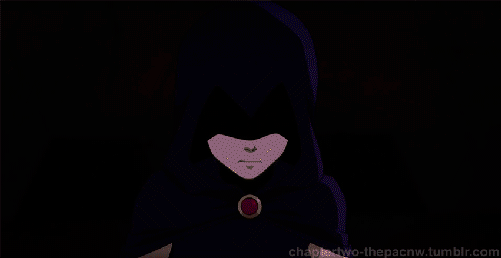
INFERNAL SOUL SORCERER
The Divine Soul Sorcerer did pretty well for itself, so I figured I'd give a 25 spell list known for the DSS as a little Halloween Treat.
C Acid Splash, Chill Touch, Infestation, Mind Sliver, Poison Spray, Toll the Dead
1 Bane, Inflict Wounds, False Life
2 Shadow Blade, Tasha's Mind Whip, Wither and Bloom
3 Animate Dead, Antagonize, Bestow Curse, Spirit Guardians, Vampiric Touch
4 Blight, Spirit of Death, Vitriolic Sphere
5 Cloudkill, Contagion, Enervation
6 Circle of Death, Create Undead, Disintegrate, Harm
7 Finger of Death, Symbol
8 Abi-Dalzim's Horrid Wilting
9 Power Word: Kill
60 notes
·
View notes
Text
HOW TO PLAY AS THE BELCHERS IN DND 5E

Today, we're going to explore how to build the Belchers as a DnD Party. Plus Teddy. We're not really going to touch on stats. Let's be honest, the Belchers aren't really great at anything. If we were building them accurately, they'd all be super low level and/or with terrible stats. But it's your character and your campaign, so you can make them more or less optimized as you see fit. They're also all basic Humans, so we're pretty much just focusing on their classes and subclasses.

BOB BELCHER
PALADIN
OATH OF DEVOTION
Bob is largely defined by his principles and values. As Tina puts it, Bob is a good business owner, but a bad businessman. He cares more about providing a quality service and succeeding his way than making money. And in Little Hard Dad, he's shown to say "It's the principle of it" way too often. This to me reads as a Paladin. Given his belief in quality service and moral principles, I label him as an Oath of Devotion Paladin.
VARIANT BUILD
FIGHTER
SAMURAI ARCHETYPE
Bob is pretty boring and straightforward, which makes Fighter really fitting for his personality. If he was going to model himself after anyone, he'd choose Shinji Kojima/Hawk. Thus, the Samurai archetype. However, if we're leaning purely into the boring practicality and straightforwardness of Bob, I might suggest Champion instead. It's the most Fighter-y Fighter you can build.
Regardless of his class, make sure to pick up proficiency with Cook's Utensils or the Chef Feat.

LINDA BELCHER
BARD
COLLEGE OF DANCE
Telling Linda Belcher not to sing or dance is like telling Tina not to talk about horses or telling Bob not to cook. It's just not going to happen. She loves the theater, she sings all the time, and she was once in an amateur garage band. All the makings of a classic bard. Given her love of dancing, I went with the College of Dance.

TINA BELCHER
CLERIC
LIFE DOMAIN
Tina is the family member who puts the most stock in things like fate, true love, karma, and damnation. She is also one of the characters that mentions religion more than anyone else. More specifically, she strikes me as a Cleric of Sune, the Faerunian Goddess of Love and Beauty. Sune's virtues include following your heart wherever it leads, championing love and romance at all costs, taking any risk in pursuit of love, being true to your heart and your passions without shame, and trying to make the world a more beautiful place. As such, Tina is the perfect candidate for a Cleric of Sune. Sune has two domains: Life and Light. Given that Tina has at least some interest in nursing, the Life Domain seems more in-line with Tina's values as a follower of Sune.

GENE BELCHER
SORCERER
WILD MAGIC ORIGIN
I know, I know. It's a sin that he's not a Bard. But Gene and Linda are very similar characters, and both work as Bards. The best thing for a party is diversity. So, I looked at Gene's personality beyond just his music. And the core of Gene is whacky nonsense. Usually, when Gene tells stories, it's an excuse for weird imagery. The Banana-fullo, Fart School, radioactive pizza sauce. Thus, the Wild Magic origin for Sorcerers spoke to me. Gene loves whacky randomness, so he would be drawn to Wild Magic. Plus, he's not really a good bard. He hates practicing, he's unfamiliar with the concept of a workbook, and kind of just expects a music career to be handed to him. Hell, when he got cast in a play and had all of two lines, he didn't memorize them, and wanted to ad lib every take. Gene's a sorcerer with the Entertainer background, but he is NOT a bard. He doesn't take his craft seriously the way Linda does.

LOUISE BELCHER
ROGUE
ASSASSIN ARCHETYPE
One of Louise's main skills is her ability to pick locks. Bob is literally afraid to go into her room as he expects boobie traps to hurt him. She's a clever tactician, masterminding several heists and revenge schemes. She's good at tricking people and lying to their faces to get what she wants. As for why she's an assassin, in the episode where Louise is uncertain of her future, one vignette paints as a John Wick style Wedgie-Sassin. She's also a fan of Francine, a Special Girl doll that spied on the Russians during the Cold War. She's not typically a fan of girly things, but she does like the one that's a spy. She's definitely the family member who would be the outlaw punk of the group.
RANGER
GLOOMSTALKER CONCLAVE
In more recent seasons, we've seen a newfound interest in archery, with Louise even making a zombie movie centered around her blossoming hobby. The Gloomstalker/Assassin multiclass is also a very good multiclass in combat, which is why I felt it was the most fitting for Louise. She's also pretty accurate with other ranged combat like spitballs and throwing things at people.

TEDDY THE HANDYMAN
ARTIFICER
BATTLE SMITH
This one pretty much goes without saying. He's a mechanic and handyman, he's used to moving and hauling heavy objects, plus he's burly, making him a great fit for the party's tank. The Battle Smith is an artificer built for the front line, and they get to be joined by a mechanical ally. Teddy would absolutely take a hit for any of the Belchers. The guy also fell off a roof and walked it off, so he's definitely got the highest Constitution score of the group.

I think this party turned out alright. Bob and Teddy are on the frontlines, Linda and Tina are the primary support, Gene is a ball of pure chaos and uncontrolled energy, and Louise is sniping people from the shadows. Everyone's doing what they should be doing to work as a unit, and also happen to be a fairly well-balanced party as well. This is an especially good party for low stakes and silly campaigns, but probably not the kind of party you want to bring to Barovia or Avernus.
#dungeons and dragons#dnd#dnd 5e#dungeons & dragons#dnd 5th edition#dnd fifth edition#wizards of the coast#wotc#bob's burgers#bob belcher#linda belcher#tina belcher#gene belcher#louise belcher#teddy the handyman
62 notes
·
View notes
Text
Writing Romance: Crafting a Likeable Asshole Love Interest

I’ve talked before about how to write a likable asshole love interest in another post, but in that post, I was more dissecting why it works for some characters, and not for others. But I didn’t really talk about the step-by-step process to pull a Frankenfurter and build a man worth drooling over. This process of course can also apply to icy bitch love interests, but the repugnant male is more common.
This is a bit of a two-for-one, cuz it’s also a bit of a walkthrough for Enemies to Lovers, but we’re more focused on building the Jerk Love Interest. It just so happens that doing so also helps with writing a slow-burn romance.

Step 1: Find the Source
Generally speaking, most people are not horrible jerks in a vacuum. Their horribleness stems from something, but so too does their good side. I covered this when talking about Zuko and how to write a redemption arc, but since that applies to this trope as well, I’ll cover it again.
The Ghost - Also called “The Scar”, this was a defining moment in the character’s backstory that happened before the story proper that defined who they became. This is the source of the trauma from whence the bastard sauce flows. For Zuko, it was the literal scarring of his face for questioning an adult, being banished by his own father, and the subsequent loss of honor. For Amity, it was being forced to stop being friends with Willow by her parents. For Bakugou, his Ghost is a mixture of teachers and adults inflating his ego as a small child, and implications of physical and/or verbal abuse from his parents that shaped his ‘Might makes Right’ world view. This is the one thing I forgot to mention in the Zuko post, so I’m glad I got a chance to include it here.
The Want - This is simply put, what the character wants. Zuko wants his honor back. He doesn’t care how he gets it, just that he gets it. If he didn’t have to bother a twelve year old for his want, I doubt he would have even glanced at the Avatar if it wasn’t related to his motivation. Amity aspires to join the Emperor’s Coven, maintain her status as valedictorian of Hexide, and keep her parents happy. Bakugou wants to be the Number 1 Student, eventually become the Number 1 Hero, and All-Might’s successor. I haven’t been keeping up with the manga, so idk if his ambitions have changed since his character development, but we’re focused on the starting point. This is what motivates your rancid romeo at the start of the story.
The Need - This is what the character requires to complete their arc. There are two types of Needs. A cooperative need is a need that feeds into the want. It’s like a step ladder to get the character from point A to point B. The other type is a combative want. This requires the character to either have a major change of self or even an entire change of want in order to be satisfied. In the simplest terms, in a cooperative need, the need leads to the want, in a combative need, the want leads to the need. Zuko Needs to determine his own destiny instead of living for other people, and to realize that nobody can take his honor away from him except himself by his own actions. Amity Needs to realize that she doesn’t have to be who her parents want in order to have a successful life, and she’s more than capable of determining who her real friends are. Bakugou Needs to realize not only that there’s more to life than being #1, but that other people are not inferior to him just by virtue of their quirks or aspirations in life. With each of these examples, the Need is combative. As an example of a Cooperative Need, I wrote a character who wanted to be respected by her peers. She believed they didn’t respect her because they saw her as weak, so she becomes determined to prove she’s not a pushover. In truth, they didn’t respect her because of her flighty and impulsive behavior causing problems for them. Her Need, to realize that her actions have negative impacts on those around her, directly feeds into and leads to her Want, to be respected by her peers. While the combative need is clearly still more common in rancid romeos, I still figured it was worth making sure people had an example of both.
The Lie - This is the faulty belief held by the rancid romeo about how the world works, their place in the world, or who they truly are. For Zuko, he believed that he lost his honor. That only capturing the Avatar can restore his honor. In truth, his honor was always there, and Zuko always chose the honorable path when given the choice. Amity believes that hard work, good grades, and results are what matters. So when somebody cheats to get ahead, Amity takes this very personally because it violates her world view, causing her to act more hostile to Luz and Willow. Bakugou believes that he is the single greatest fledgling hero ever, so when he gets to UA and sees Todoroki freeze an entire building, he has an existential crisis that results in a one-sided rivalry, wherein beating Todoroki is the only way to prove to himself that he IS in fact the best fledgling hero in the world, and he can return to his previous world view assured of his own supremacy.
The Truth - Just as it sounds, the Truth is the cure to the Lie. Whatever misgiving the rancid romeo has about how the world works, their place in the world, or who they truly are, can be resolved by realizing the truth. The Truth manifests in the story as that sort of A-ha! moment for character. It’s the moment when they come to understand where they went wrong, and resolve to change. The Truth marks the epiphany, and the transition from Want to Need in the Arc. For Zuko, the Truth moment comes when Zuko confronts his father on the Day of Black Sun and tells him to eat a dick for being a shitty father, and he’s gonna run away and join a Gaang. For Amity, the Truth is a gradual thing, but comes the most clearly in the moment when she and Luz get trapped in the library. Up to that moment, Amity couldn’t really figure Luz out, and she began to realize her own actions weren’t exactly honorable either. After this episode, we start to see a quiet, distant, and reflective Amity who’s clearly rethinking her values. For Bakugou, the Truth really comes to a head when he discovers that Midoriya will inherit All-Might’s quirk and be his successor. I’m not caught up on the Manga, so while I’m aware that Bakugou has started to really apologize to Deku and is starting to work on redeeming himself, I’m not up to date on Bakugou’s redemption arc. However, one could argue Bakugou’s first Truth came when he saw Todoroki freeze an entire building, had an existential crisis, and then realized he was just a big fish in a little pond, and his poor little ego starts lashing out violently because he doesn’t know how to respond to this shift in his world view. He’s not the greatest thing since sliced bread, and he’s not sure what to do about it.

Step 2: A Beastly Start
Beauty and the Beast lives and breathes on this trope, and this first step is why. Beauty and the Beast bases its entire story on how appearances can be deceiving and first impressions don’t always paint the whole picture. In order to write a successful Jerk Love Interest, the romantic lead AND the audience both need to see the love interest in a negative light. The love interest needs to really get off on the wrong foot with both the romantic lead and the audience. Nothing about them should be romanticized or made to be sexy. Because that’s not supposed to be the romantic lead’s first thoughts. Kirishima dismisses Bakugou as a mindless brute, Luz is too busy being angry that Amity is a bully to notice how cute she is, Emma immediately sees through Hook’s lies and leaves him to be eaten by ogres, and Sansa is literally afraid of the Hound when she first meets him. A meet-cute, this couple is not. Sometimes, the romantic lead and the audience meet the love interest at different times. Bakugou is introduced as a deuteragonist to main character, Midoriya, and immediately sets himself up as a colossal shit weasel. But once he gets to UA, he repeats this character establishing behavior on day 1 to ensure that everyone in the class (Kirishima included) is completely convinced that this man is made of 100% rotten bastard sauce. However, while you want your rancid romeo to be disliked at first, you do eventually want your romantic lead and audience to warm to them. To do that, the rancid romeo can’t cross the line to hardcore villainy. Anything that would warrant a trigger warning should be immediately discarded as not viable. Some rancid romeos can get away with more severe bastardness, as long as it’s not directed at the romantic lead. Bakugou probably starts off the worst of the characters I’ll use as reference, as in the English Dub, he tells the hero to kill himself. Needless to say, Bakugou started off extremely unpopular as a result, and many (but not all) fans dislike pairing Bakugou with Deku because of this past toxic bullying behavior. But while Bakugou was a horrible bully to Midoriya, the protagonist, he was only ever really surly and unpleasant with Kirishima in their first few encounters, but he’s not a bully to Kirishima like he is to Midoriya. Kirishima’s first impression of Bakugou is that Bakugou is a crazed maniac and he’s intent on killing their fellow classmate in what’s supposed to be a simple drill. Not exactly a swoon-worthy first impression.

Step 3: The Beauty Within
This is the first glint of any goodness in the character. Sometimes this is more overt, like when Luz finds Amity reading to children, but often the first glimmer is smaller. Easy to miss, even. When Sandor Clegane wraps his cloak around Sansa, he does so without being asked. He is simply acting on his personal code of honor. We the audience don’t think much on this because we would assume most people in this situation would do that. So it’s no big deal, right? But then, you look at Sandor’s character and it becomes sort of strange. Why would someone so blunt, harsh, and bitter be so quick to do the noble and just thing like that? It’s sort of sneaky until the audience stops to think about it. Amity comes to understand Luz when Luz explains how hard she has to work to learn even really basic spells, and Amity, for all her ego, respects the work that Luz has to put in and undoes the binding ritual that would have forced Luz to stop learning magic. Bakugou actually has two first glimmers. The first is right before he’s attacked by the sludge monster. His friends are trying convince him to sneak into a bar and hit on chicks, and Bakugou immediately shuts it down because getting caught could hurt his academic future. Bakugou might run on Bastard Juice, but it’s Ambitious Bastard Juice. Like with Sandor, it’s an easy enough detail to overlook on a first viewing, but really shows what Bakugou values on further reflection. The second glimmer comes when Bakugou and Kirishima get to really interact with one another for the first time. When they get paired off during the USJ Attack, Bakugou doesn’t seem concerned with helping his classmates, focusing more on stopping the villains that have infiltrated the event. While again this seems to be cold and selfish, Kirishima realizes that what Bakugou’s not saying is that he’s not really worried about his classmates being in danger because he believes they can genuinely fend for themselves. It’s a round-about show of respect that Bakugou doesn’t think his classmates need him to rush in with a rescue. And that first spark of heroism and nobility inside of Bakugou is what convinces Kirishima to actively pursue a friendship with this abrasive and vulgar dumpster gremlin. This is the single most important step because this is what makes the asshole likeable. Bakugou may be many things: foul-mouthed, egotistical, narcissistic, elitist, and a bully, but Bakugou also has respectable qualities too. He’s a hard-worker, he believes in earning what you have, and doesn’t believe in cheating or shortcuts. In spite of all of his rotten traits, he has some damn respectable qualities as well, and this is merely the first chance to let the audience and romantic lead see a quick peak of this inner kindness. Likewise, Sandor Clegane is vulgar and cynical, but he kneels before his king, holds Sansa back from making a choice that would get her killed, and saves Sansa from being assaulted by a group of men. He may be surly, but he is also noble and honorable. Same with Zuko. He may be angry and selfish, but he keeps his word and makes honorable choices when given the chance. From this point in, use the blossoming relationship to expand upon this first spark, and turn the preview into a full display. This is the moment to show the audience and romantic lead that there’s more to the rancid romeo, and once they’ve seen that sneak preview, you’ve got to deliver more good qualities as we get to know the rancid romeo better. A sliver of good that never expands or shines any brighter is not a compelling rancid romeo, because eventually, the rancid part does need to lessen. Maybe not go away, sometimes that abrasiveness or jerk nature is part of a character’s charm, but by story’s end, they should be less of a jerk. Defecting to the good side doesn’t suddenly make Zuko any less of an awkward moody guy, it merely gives him a positive support system wider than just his amazing uncle. I mean, Zuko makes the gaang tea and tries telling them a joke. Seasons 1 and 2 Zuko never would have tried to tell anyone a joke, and the only other person he ever made tea for was his uncle.

Step 4: An Act of Kindness
Now that your rancid romeo has displayed some level of inner goodness or a trait worthy of admiration, it’s the romantic lead’s turn to make the first move. This is because while the rancid romeo is capable of kindness and love, they’re usually too damaged to make the first move. Thus, the romantic lead must take the first step forward and reach out to the love interest. This comes in varying stages depending on the story. After Covention, Lost in Language has Luz hoping that she and Amity can become friends, and she even protects Amity from a cruel prank by her older siblings. By episode’s end, Amity and Luz aren’t friends per se, but they understand each other better than they did before, and Amity really starts to rethink how she views not only Luz, but herself as well. After the USJ attack, Kirishima reaches out to Bakugou during the Sports Festival Arc, volunteering to be Bakugou’s teammate, and when Bakugou calls him a mean nickname, Kirishima merely corrects him. In the simplest terms, this is the moment when the romantic lead extends the olive branch to the love interest and offers to shift the dynamic from angsty stranger with a secret heart of gold to tentative friendship with a shaky foundation.

Step 5: A Kindness in Turn
Now that the romantic lead has made a gesture to the damaged goods that is the love interest, they need to react appropriately and return the favor. Two characters in a relationship are effectively in a dance together. If only one person is doing all the work while the other person stands there like a log, that’s not really two partners in motion. To truly perform the dance of love, both the romantic lead and the rancid romeo must give and take, and this is when it’s the love interest’s time to take the lead in the dance. Failure to meet this step means that your ship cannot and should not hit any stage after it, as a rancid romeo who never does anything for the romantic lead is not appealing. It doesn’t even need to be something big. Bakugou’s kindness in turn for Kirishima is just offering to tutor him. It’s hardly a grand romantic gesture, but considering Bakugou doesn’t tutor anyone else and doesn’t really like most people, it says a lot that Bakugou would even bother taking the time to help another student with their studies.

Step 6: There’s Something There
Now that both your romantic lead and your rancid romeo have made an effort to do things for each other and bond, we formally shift from two awkward acquaintances to legitimate friends. If the dynamic is more straight from Enemies to Lovers, then either this stage is skipped entirely, or instead of friendship, this stage is full of playful banter, snarky compliments, and the beginning stages of a crush. As both characters have now found something in the other worth admiring or being interested in, this stage serves to deepen the bond before the actual romantic elements start to seep into the relationship. This could be as significant as having a heartfelt talk about deeply seeded trauma, or as simple as grabbing a beer after work. This can also be the point when past traumas are worked through, such as taking down emotional walls, or being supportive of each other’s goals.

Step 7: Romance Starts to Blossom
Once the pair have started to enjoy each other’s company and found things to respect or admire in each other, all of that time together will eventually lead to romantic feelings starting to form. This is the stage when crushes comes into play. Longing gazes, stolen glances, blushing and flustering, romantic tension. It all builds up to one thing: Puppy Love. While friendship is not a mandatory step in the Enemies to Lovers trope, it can be useful as a bridge from begrudging respect to genuine admiration. In the case where Enemies to Lovers is spicy and heated, such as the relationship between Anthony and Kate in season 2 of Bridgerton, this is the stage when they start to realize and/or admit their growing attraction to one another. For Lumity, we see Amity catches feelings first by constantly blushing around Luz, but Luz does start to reciprocate those feelings, leading up to both girls trying to ask each other out.

Step 8: An Act of Love
This is the point in the story when the rancid romeo reaches the Aha! epiphany moment of their redemption arc, and transitions from Want to Need. This is the moment when they realize they were wrong and make a grant gesture. As not all love stories are romances, it doesn’t necessarily have to be an act of love or a grand romantic gesture, it can also be a grand gesture given their personality. Bakugou accepting Kirishima’s hand in Kamino or giving him the pep talk needed to realize Red Riot Unbreakable are two key moments for the Kiribaku ship because Bakugou is displaying uncharacteristic trust and interest in someone other than himself. As such, Bakugou accepting help from Kirishima and bothering to encourage Kirishima to rise above his insecurities are massive things for Bakugou. For Amity and Luz, the big moment came when Amity stood up to her own mother to protect Luz, as fearing her mother is a huge part of Amity’s trauma and issues. However, unlike step 7 which can only exist after steps 3-6, step 8 can really happen at any point. This is merely the turning point in the rancid romeo’s personal arc, and in some romances, the rancid romeo needs to reach this turning point before step 6 or 7 can even happen. Many Zutara shippers would argue that Zuko and Katara’s relationship would fall under this purview, as either of them having any romantic feelings for each other would only be possible after Zuko defected to the good side and turned against his father. However, the Act of Love doesn’t have to be the same thing as their personal turning point. Zuko’s turning point (defying his father in Day of Black Sun) is distinct from Zuko’s act of love (helping Katara avenge her mother in The Southern Raiders). Likewise, Bakugou’s act of love (accepting Kirishima’s hand in Kamino) is distinct from his turning point (apologizing to Deku for being such a shithead).

Step 9: True Love
Now that the rancid romeo has made a noble sacrifice and faced a major hurdle in their redemption arc, they’re finally ready to receive and return the love of their romantic lead. They have overcome the source of their trauma and grown to properly understand their own thoughts and emotions to better display and act upon their own feelings honestly. They are finally in a good place to truly love and be loved by another. It is worth keeping in mind that love and attraction are not the same thing. Romance blooming in step 7 is more the baby steps. The crushing and the blushing and the awkward glances. This is the real deal. True love. I’m talking one person’s brushing their teeth while the other’s on the toilet level of comfort with each other. They have truly come to understand and appreciate one another on a level so intimate that they support and care for one another unconditionally. By this point in the story, the Rancid Romeo’s redemption arc is almost certainly finished. They’ve gotten closure on their baggage, and have the emotional and mental capacity to give their partner the love and affection that they deserve. It is only by this point (except in the case of arranged marriage narratives) that Married Ever After and/or Babies Ever After can even be considered as a possible ending to the romantic storyline for the characters.
588 notes
·
View notes
Text
How to Play as Bugs Bunny in DnD 5e

That’s right, today we’re building the epic icon of Bugs Bunny. As the star of Looney Tunes, I could think of nobody better to start with than Bugs Bunny. Now, Bugs has a lot of tricks up his sleeve. He’s a master of disguise, misdirection, manipulation, he can pull items out of the hammerspace behind his back, and defy the laws of physics. So, clearly Bugs is some kind of all-powerful trickster. But how do we build him?
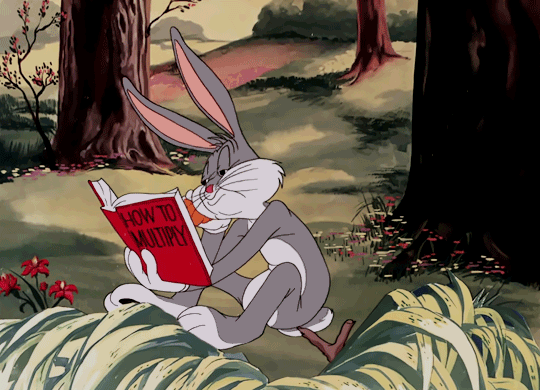
For his race, Bugs is a Harengon, a type of rabbitfolk from the feywild. We’ll give him +2 CHA, +1 DEX. As a Harengon, Bugs is a Fey type creature immune to the effects of spells like Charm Person and Hold Person that specify a humanoid target. He also gains proficiency with Perception, adds his proficiency bonus to his initiative rolls, add a d4 to a failed DEX saving throw, and jump five feet times his proficiency bonus.
For his background, Bugs is most famous for his ability to pull things over on unsuspecting maroons. We’ll label him as a Charlatan. Now, why is he not a Performer? Because Charlatans get automatic proficiency with the Disguise Kit. If there’s anything he’s known for, it’s his disguises.
In terms of Alignment, Bugs tap dances on the border between Chaotic Good and Chaotic Neutral.

BARD
COLLEGE OF CREATION
Bugs is undeniably a Bard. He has a long history as a Vaudeville type performer, even canonically being a famous performer in numerous cartoons. In one, his gags with Elmer Fudd even began as a comedy routine they performed on stage, and later evolved to make them a famous comedy duo. In others, he’s a famous celebrity famed for his career in show business. So, he’s definitely a Bard. But, what College? Well, that would be the college of creation. They can create musical notes that attack people, they can pull items out of nowhere, which by 14th level can be Huge items, they can animate objects around them like some old black-and-white cartoon from the 20s or 30s, and by late game, he can make multiple items at once. As a Bard, we get any three skills, and we’ll take Performance, Persuasion, and Stealth.

Name: Bugs Bunny
Race: Harengon
Background: Charlatan
Alignment: Chaotic Neutral
STATS
STR 8 DEX 20 CON 12 INT 12 WIS 14 CHA 20
SAVING THROWS
STR -1 DEX +11 CON +1 INT +1 WIS +2 CHA +11
HP: 123
AC: 15
PB: +6
SDC: 19
SAB: +11
PP: 24
Initiative: +11
Bardic Inspiration: (5) 1d12
SKILLS
Deception (+17)
Perception (+14)
Performance (+11)
Persuasion (+17)
Sleight of Hand (+17)
Stealth (+11)

SPELLS
C Friends, Mage Hand, Minor Illusion, Prestidigitation, Vicious Mockery
1 Charm Person, Command, Disguise Self, Silvery Barbs, Tasha’s Hideous Laughter
2 Mirror Image, Enthrall, Gift of Gab, Suggestion
3 Antagonize (UA), Dispel Magic
4 Charm Monster, Confusion, Polymorph
5 Dream, Geas, Mislead
6 Mass Suggestion, Otto’s Irresistible Dance
7 Teleport (how he often ends up in the wrong place)
8 Glibness
9 True Polymorph
BARDIC MAGICAL SECRETS
10th Counterspell, Fly
14th Fabricate, Creation
18th Contingency, Reverse Gravity

WHY NOT ROGUE?
Some may wonder why I didn’t even consider the Rogue for Bugs Bunny. After all, Rogue does have some useful features. Uncanny Dodge and Evasion go a long way to make Bugs as slippery as he is, and that’s a good point. They also get another skill, giving him the chance to pick up Insight proficiency. Sneak Attack bonus also lets Bugs capitalize on his sneaky underhanded tactics. But, there’s a good reason why I chose Bard. Firstly, Arcane Trickster Rogues work off Intelligence, and Bugs is not book smart. He’s a wise guy and a charmer, but one of his common running gags is mispronouncing common sayings, like saying maroon instead of moron. Arcane Tricksters are also cut off at the 4th level, cutting Bugs off from great spells like Creation and Mislead, which go so well with his tactics. Any other type of rogue doesn’t get any spells, which deviates from where Bugs Bunny shines as a DnD Character.

Bugs is a character I’ve wanted to build for a while. I was going to do him when the Harengon came out, and then I just kind of forgot and left him sitting on a backburner. But he can do everything I would hope for. He’s clever, charming, and most importantly of all, great at manipulating people without outright brainwashing them. Just exploiting their stupidity. And since the Bard of Creation can create just about anything out of thin air, it really lets the player let their imagination run wild. Let’s see how intimidating Strahd is after he’s had an anvil dropped on his head.
292 notes
·
View notes
Text
How to Play as Raven in Pathfinder 2e

I’ve only recently started looking into Pathfinder 2e almost entirely on a random whim, and was surprised to learn just how malleable and adaptive the building process could be. So, for those who play Pathfinder 2e, I figured I’d return to beat a dead horse and talk about how to play my all-time favorite superhero in this game. Keep in mind, I’m a lot newer to Pathfinder than I am to Dungeons and Dragons, so I might make a mistake or two along the way.

ANCESTRY
HUMAN ANCESTRY, TIEFLING HERITAGE
DEMON LINEAGE
In Pathfinder, race comes in two stages. Ancestry is your main “race”, while Heritage defines the kind of that sort of creature that you are. Tieflings in Pathfinder are only a Versatile Heritage, allowing someone to be a Dwarf Tiefling, an Elf Tiefling, or a Skeleton Tiefling. Raven’s mother, Arella, is a Human, so we’ll say Raven has Human Ancestry and Tiefling Heritage. Characters get Ancestry Feats as they level up, so Raven gets to choose from Human and Tiefling options. Furthermore, Tieflings have a number of Lineage feats that are entirely optional, but must be taken at level 1. Raven does not have to take these feats if she does not want to. Raven can have a lineage descended from Devils, Demons, Daemons, Rakshasa, Velstrac, or Qlippoth. Of these, Trigon maps the closest to a Demon, so we’ll say that if Raven wants to take Lineage feats, she should take the Pitborn and Demon Magic feats that mark her as having Demon Lineage if she so chooses.
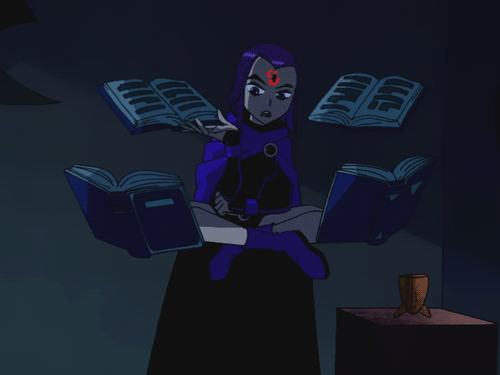
BACKGROUND
For her background, a few stood out. When I build characters, I try not to only think of what’s the best choice, but to lay out my entire thought process to let people make their own conclusions and tweak my builds to suit their own preferences. In Pathfinder 2nd Edition, Backgrounds give +1 to 2 stats, one of which must be between one of two options. For instance, the Scholar background makes you take either INT or WIS, plus a second of your choosing, so you could choose INT and DEX or WIS and CHA. Most also usually give you training in 2 skills, and one extra feat is attached to the background that you choose.
CHOSEN ONE (Rare): Raven is the Chosen One of Trigon’s prophecy. Any feature with the (Uncommon) or (Rare) marker is not “core rules”, and therefore should be discussed with your DM as to its applicability.
STATS: STR or CHA
SKILLS: one related to your prophecy, Lore: Fortune-Telling
FEAT: Prophecy’s Pawn (unique)
CULTIST: Arella was literally in Trigon’s cult. That’s how she came to be Raven’s mother. So, by proxy, one could make the same conclusions about Raven.
STATS: INT or CHA
SKILLS: Occultism, Lore: Cult of Trigon
FEAT: Schooled in Secrets
MAGICAL EXPERIMENT (Rare): We only want the Enhanced Senses feature. Tieflings already get Low-Light vision, so Enhanced Senses gives Raven Dark Vision and Thoughtsense, letting her see in the dark and sense things with her mind.
STATS: CON
SKILLS: Occultism, Lore: Academia
FEAT: Enhanced Senses (unique)
OCCULT LIBRARIAN: They collect creepy tomes about esoteric mysteries ancient magics, and forbidden lore. Sounds like Raven.
STATS: INT or WIS
SKILLS: Occultism, Lore: Academia
FEAT: Schooled in Secrets
SCHOLAR: You studied magical lore, becoming trained in either Arcana, Occultism, or Religion.
STATS: INT or WIS
SKILLS: (Arcana, Occultism, Nature, or Religion), Lore: Academia
FEAT: Assurance
STUDENT OF MAGIC: This is just another variation of Scholar and Occult Librarian, just with a different free feat.
STATS: INT or WIS
SKILLS: (Arcana, Occultism, Nature, or Religion), Lore: Academia
FEAT: Recognize Spell
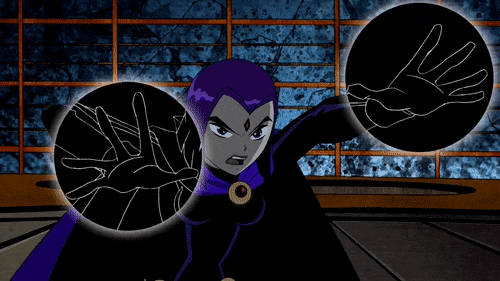
CLASS OPTIONS
I’ve built Raven in Dungeons and Dragons before, but Pathfinder uses different classes and has different subclasses as well. It’s also worth pointing out that a lot of the time, “subclasses” are rather bare-bones. Most of the build comes from the many varieties of feats you get access to. Feats are linked to classes, ancestry, and skills, meaning that these elements are more important when building Raven, whereas DnD 5e puts more of the emphasis on the subclass. Meanwhile, Pathfinder 2e seems to treat subclasses more like additional flavor rather than the crux of the build. Some subclasses, like Sorcerers and Clerics come with a few set spells or features, while others are largely indistinguishable. The only real difference between an Abjuration wizard and an Enchantment wizard is that they add one 1st level spell of their school to their spell list, and get a subclass unique spell that’s not cast with spell slots, but rather, with focus points. Furthermore, different gods can give different spells, meaning that what deity Raven worships as a Cleric is just as important as which domain she chooses. Even as a Knowledge Domain Cleric, there’s a difference between worshiping Pharasma, Raumya, and Mephistopheles. The Cleric Spells came from the god you chose, while the Domain Spells came from the Domain you chose.
CLERIC
MAGIC DOMAIN (Nethys)
Divine Ability: Wisdom or Intelligence
Divine Font: Harm or Heal
Divine Skill: Arcana
Favored Weapon: Staff
Cleric Spells: Magic Missile, Magic Mouth, Levitate, Blink, Prying Eye, Wall of Force, Warp Mind, Maze, Disjunction
Domain Spells: Magic’s Vessel, Mystic Beacon
Across the official deities, while I’ve only given it a cursory glance being relatively new to Pathfinder’s lore, I believe that Nethys is the most fitting deity for Raven to worship, a god of Knowledge, Magic, Protection, and Glyph Domains. While the Darkness Domain is fitting for her shadow magic, none of the official deities seemed to really feel like they fit Raven.
PSYCHIC
THE DISTANT GRASP (Occult Spell List)
EMOTIONAL ACCEPTANCE
Standard Psi Cantrips: Mage Hand, Telekinetic Projectile
Unique Psi Cantrips: Telekinetic Rend, Vector Screen, Dancing Blade
Granted Spells: Kinetic Ram, Telekinetic Maneuver, Levitate, Fly, Telekinetic Haul, Poltergeist’s Fury, Telekinetic Bombardment, Falling Sky, Implosion
Psychics are interesting because they effectively get two subclasses. The Conscious Mind is the main subclass, giving them granted spells and unique features, while the Subconscious Mind determines their casting stat and gives one Psyche Action. The Conscious Mind subclass I chose is The Distant Grasp, the subclass which prioritizes Telekinetic abilities. The Subconscious Mind subclass Emotional Acceptance focuses their power through control over their emotions. More than that, they can empathically bolster the emotional state of their party, revitalizing their confidence, healing their wounds, and protecting them from mental harm. Emotional Acceptance causes Raven to cast with Charisma. For the purposes of this build, I will be using this class for Raven.
SORCERER
DEMONIC BLOODLINE (Divine Spell List)
Bloodline Skills: Intimidation, Religion
Granted Spells: Acid Splash, Fear, Enlarge, Slow, Divine Wrath, Abyssal Plague, Disintegrate, Divine Decree, Divine Aura, Implosion
Bloodline Spells: Glutton’s Jaw, Swamp of Sloth, Abyssal Wrath
By DnD rules, Trigon is closer to acting like a Demon than a Devil. He’s not charming or manipulative in the way that a Devil would be. He is a raw force of nature, like a Demon. The unique Bloodline Spells being tied to three of the Deadly Sins is also appropriate, given that in the comics, Raven is the Sin of Pride, while she has 6 brothers who each represents the other 6 deadly sins.
SHADOW BLOODLINE (Occult Spell List)
Bloodline Skills: Occultism, Stealth
Granted Spells: Chill Touch, Grim Tendrils, Darkness, Chilling Darkness, Phantasmal Killer, Shadow Siphon, Collective Transposition, Duplicate Foe, Disappearance, Weird
Bloodline Spells: Dim the Light, Steal Shadow, Consuming Darkness
Raven’s powers come from her bloodline, but while that power does come from Trigon’s demonic powers, her actual powers and abilities always skewed more shadow and darkness than fire and brimstone, which makes the Shadow Bloodline rather fitting as it ties Raven’s lineage to the Plane of Shadow.
WITCH
NIGHT PATRON (Occult Spell List)
Patron Skill: Occultism
Hex Cantrip: Shroud of Night
Granted Spell: Sleep
The Witch is basically Pathfinder’s version of Warlocks. Instead of selling your soul, it’s more about forming a mystical connection to the universe and drawing power from a natural source in a way that’s different from a druid. Night Witches hear their patron in the shadows and darkness, and feel the magic of the universe flowing through the darkened night sky. The secrets the shadows tell them teach them how to command the powers of shadow, murk, and darkness. Witches also get a familiar, letting Raven have a Raven for her familiar. Though the Shadowcaster Archetype, Raven could have a Shadow Familiar that takes the form of a Raven.
WIZARD (Arcane Spell List)
SCHOOL OF ENCHATMENT
IMPROVED FAMILIAR ATTUNEMENT
Like Psychics, Wizards effectively get two subclasses: Their Arcane School and their Arcane Thesis. One determines which school of magic is their focus, and the other determines what their magical research focuses on. School of Enchantment doesn’t give much, much like with the Subconscious Mind with the Psychic. It’s rather bare bones, providing only really two features, while the Thesis provides the real meat of the build. Given the importance of Raven’s spectral raven, I figured that a stronger bond with her familiar was the most appropriate.

ARCHETYPES
In Pathfinder, one does not multiclass. If you start as a Wizard, you will build a Wizard all the way to level 20. But, you can augment your build by taking an Archetype, allowing you to pick up predetermined features from another class, or completely unique Archetypes. As such, one can make a Rogue with a Trickery Cleric Archetype, Druid with a Ranger Archetype, or an Illusion Wizard with an Assassin Archetype. It’s also worth mentioning that a character can take multiple archetypes at once. You can play a Bard that takes the Cleric archetype to pick up the Trickery Domain, while also picking up the Assassin archetype as well. It’s mostly about balancing the feats you want to take, because archetype feats level with your main class. Furthermore, taking an Archetype feat at 8th level won’t stop you from picking up a 10th level class feat, and vise-versa, you could ignore your 6th level archetype feat and still pick up your 10th level archetype feat if that’s the only one you want. So, Raven could class-wise be a Shadow Sorcerer, while also taking the Psychic Archetype if you so choose. It’s also worth mentioning that some DMs let you take class features AND archetype features on level up, which helps alleviate the Sophie’s Choice at certain levels, though this is very much a house rule, and not a guaranteed rule. Speak with your DM before taking an Archetype because if you want so many class features, you may not have room for Archetype features at all. I ran into this issue myself while doing a demo build of Raven. I liked too many of her Psychic class features, and ended up with no room to fit in any Archetypes, though I did want to include them.
CLASS ARCHETYPES
Cleric
Psychic
Sorcerer
Witch
Wizard
UNIQUE ARCHETYPES
*Familiar: Raven does not get a familiar as a Psychic. If Raven wants a Familiar, she will have to take the Shadowcaster Dedication feat, and then the Familiar Feat, both from the Shadowcaster Archetype.
CATHARTIC MAGE (Uncommon)
Raven gains further power from tapping into her emotions. Anger is the most appropriate, as that is the main emotion Raven needs to keep under control. Each strong emotion can give Raven specific spells, she can focus to trigger emotions at will, and empathically extend her emotions to her allies.
FAMILIAR MASTER
Raven’s familiar is more adept than most. She can improve the abilities of her familiar, cast spells through her Familiar’s location, boost team moral with her familiar, her familiar can outgrow needing a corporeal body, and it can receive even more benefits than it got through an earlier feat.
LIVING VESSEL
Raven has been made the vessel for Trigon’s powers. Causes Raven’s appearance to change and allows her to manifest demonic claws, drain the lifeforce out of enemies, infect others with her demonic possession, and taking on a more fiendish form.
SHADOWCASTER (Uncommon)
This archetype lets Raven learn a number of shadow-related spells, have a familiar no matter her class, and do a variety of shadowy magical things. She expands her spell list to include more shadow magic, gains shadow-related domain spells, can further enhance her shadow form familiar, and becomes better at stealth through mastery over shadow.
SPELLMASTER (Uncommon)
Raven becomes a master of her spellcraft. She can transform into a raven herself, ward against enemy spells, absorb magic, and gains a more powerful counterspell.

SKILLS
In Pathfinder 2e, Skills are not simply Proficiency and Expertise. Rather, they come in Four Stages: Trained, Expert, Master, Legendary. As you level up, you gain Skill Increases that let you raise 1 skill of your choice to the next highest rank, though some increases can only be done after reaching a certain level, thus keeping you from having Legendary Stealth by level 9. These Skill increases occur at levels 3, 5, 7, 9, 11, 13, 15, 17, and 19. So, Raven can choose to focus on making a few skills legendary, or she could instead prioritize having more skills at the Expert and Master range by not evolving any to Legendary. It’s entirely up to the player. However, these are the skills I would most highly recommend for Raven:
Arcana: Knowledge of the mystical, enchantments, and arcane magic
Deception: Ability to Lie convincingly
Diplomacy: Ability to Negotiate easily
Intimidation: Ability to Coerce easily
Lore: A knowledge skill for one exact topic, can have several at once
Medicine: Knowledge of healing, physiology, and medical treatments
Occultism: Knowledge of ghosts, cults, legends, and Occult magic
Religion: Knowledge of Celestials, Fiends, Deities, and Divine magic
Society: Knowledge of customs, manners, and history
Stealth: Ability to move undetected easily
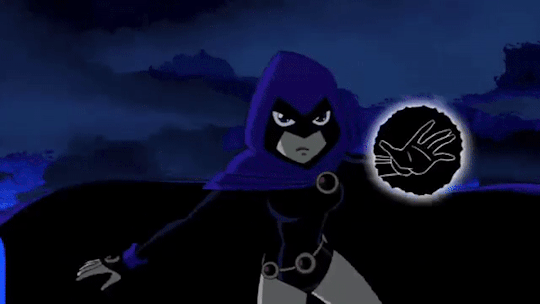
FEATS
There are a variety of feats in Pathfinder 2e that really shape how a character plays. Keep in mind that this post is a Guideline, not a rule book. For the purposes of this post, I won’t be including any Archetype feats because when I built Raven, I ended up only taking base Class feats from her Psychic Class, so that’s what I’m going to prioritize. If you want to make your own changes, just swap out the feats you don’t like. To simplify things, I’m just going to lay out her feats as they become available by level. For this list, I’m going to build as though Raven has taken the Magical Experiment background simply because the added Darkvision and Thoughtsense frees up room for more feats I want Raven to take, though Raven can gain Darkvision as a level 1 Tiefling feat, and Thoughtsense from Level 8 onward as a Psychic Class feat. I filled a lot of the late game skill and general feats with Assurance, a 1st level feat that just assures that Raven rolls well on skills she’s trained in. Because each skill has unique feats that unlock depending on how high you’ve trained them, I didn’t want to load up my guideline build post with a bunch of feats that only fit the way I would play as Raven. The only one that’s truly “mandatory” for the build is Occultism, as it’s connected to a few features, and is also the skill associated with her spellcasting. So, many of the Assurance feats are merely placeholders for high level skills depending on the skills you chose to invest further attention toward.
Level 1
Ancestry Feat: Pitborn
Skill: Athletics
Additional Feat: Assurance (Occultism)
Level 2
Class Feat: Psi Burst
Skill Feat: Root Magic
Level 3
General Feat: Toughness
Level 4
Class Feat: Thoughtform Summoning
Skill Feat: Recognize Spell
Level 5
Ancestry Feat: Fiendish Resilience
Level 6
Class Feat: Violent Unleash
Skill Feat: Schooled in Secrets
Level 7
General Feat: Disturbing Knowledge
Level 8
Class Feat: Dark Persona’s Presence
Skill Feat: Bizarre Magic
Level 9
Ancestry Feat: Light from Darkness
Once-Per-Day Spells: Paranoia, Shatter
Level 10
Class Feat: Emotional Surge
Skill Feat: Assurance (Arcana)
Level 11
General Feat: Ancestral Paragon
Ancestry Feat*: Fiendish Lore
Level 12
Class Feat: Psi Catastrophe
Skill Feat: Assurance (Lore: Fiendish Plane)
Level 13
Ancestry Feat: Summon Fiendish Kin
Level 14
Class Feat: Conscious Spell Specialization
Skill Feat: Assurance (Religion)
Level 15
General Feat: Multilingual
Level 16
Class Feat: Constant Levitation
Skill Feat: Assurance (Diplomacy)
Level 17
Ancestry Feat: Final Form
Level 18
Class Feat: Target of Psychic Ire
Skill Feat: Assurance (Society)
Level 19
General Feat: Diehard
Level 20
Class Feat: Become Thought
Skill Feat: Assurance (Intimidation)

SPELL LIST
Psychics, like Bards and Sorcerers, are what the community calls Spontaneous Spellcasters, which means their spells work the most like spellcasting in DnD 5e. Once Raven knows a spell, she can cast it at will assuming she has the right spell slot for that spell. However, in order for Raven to cast a 1st level spell at a higher level, she must learn the spell again at that level, so if she wants to cast Fireball at 9th level, she has to learn 9th level Fireball. For this spell list, I will be listing every spell on the Occult spell list at it’s initial level that I feel fits her. I will be ignoring the spells she already gets from her Conscious Mind. This is more of a spell list to pick from what you like, and of course, if you want to have a spell upcasted, don’t forget to have Raven relearn the spell at a higher level. Some spells are from supplementary material, and thus are marked with an Asterisk.
CONSCIOUS MIND SPELLS (The Distant Grasp)
Standard Psi Cantrips: Mage Hand, Telekinetic Projectile
Unique Psi Cantrips: Telekinetic Rend, Vector Screen, Dancing Blade
Granted Spells: Kinetic Ram, Telekinetic Maneuver, Levitate, Fly, Telekinetic Haul, Poltergeist’s Fury, Telekinetic Bombardment, Falling Sky, Implosion
CANTRIPS
Detect Magic, Message, Phase Bolt, Prestidigitation, Read Aura, Sigil, Shield, Warp Step
1ST LEVEL
Charm, Fear, Floating Disk, Grim Tendrils, Ill Omen, Lock, Mage Armor, Magic Missile, Mending, Mindlink, Object Reading, Penumbral Shroud, Pet Cache, Phantom Pain, Protection, Sanctuary, Sleep, Soothe, Spirit Link, Thoughtful Gift
2ND LEVEL
Blur, Calm Emotions, Comprehend Language, Darkness, Darkvision, Dispel Magic, Empathic Link, Impart Empathy*, Knock, Mind Games, Paranoia, Remove Fear, Remove Paralysis, Reduce Energy, Restoration, Restore Senses, Spectral Hand, Swallow Light*, Umbral Extraction, Vicious Jealousy*
3RD LEVEL
Agonizing Despair, Circle of Protection, Dream Message, Enthrall, Familiar’s Face, Locate, Mind Reading, Shadow Projectile, Shadow Spy, Wall of Darkness*
4TH LEVEL
Dimension Door, Discern Lies, Gaseous Form, Globe of Invulnerability, Necrotic Radiation*, Rebounding Barrier, Resilient Sphere, Spell Immunity, Suggestion, Telepathy,
5TH LEVEL
Banishment, Black Tentacles, Crushing Despair, Death Ward, Forceful Hand, Glimmer of Charm*, Invoke Spirits, Mind Probe, Repelling Pulse, Sending, Shadow Blast, Shadow Siphon, Shadow Walk, Synaptic Pulse, Telepathic Bond,
6TH LEVEL
Collective Transposition, Phantasmal Calamity, Scintilating Safeguard, Teleport, Wall of Force
7TH LEVEL
Energy Aegis, Force Cage, Plane Shift, Possession, Shadow Raid, Tempest of Shades, Visions of Danger, Warp Mind
8TH LEVEL
Devour Life*, Discern Location, Dream Council, Hypnopompic Terrors,
9TH LEVEL
Telepathic Demand, Unspeakable Shadow, Weird
10TH LEVEL
Gate, Shadow Army, Time Stop

Given how new I am to Pathfinder 2e, I may have made some mistakes, overlooked something important, or missed something crucial to her build, but for what’s here, I think we managed to fit in a lot of who Raven is. As a tiefling, she’s able to summon demons and take on a demonic form. As a Psychic, she’s got great access to telekinetic powers, permanent levitation at level 16, and focusing her mind is a key component to her play style. The occult spell list makes it possible for her to use a wide variety of shadow magic, and even emotion magic to let Raven make good use of her empathy powers as well as her emotional manipulation powers that she uses more in the comics. Overall, I’m very pleased with how Raven came out here. Let me know if you guys liked this. Maybe I’ll do more Pathfinder builds in the future.
91 notes
·
View notes
Text
The Many Cleric Domains of Aphrodite

According to the Player’s Handbook, A Cleric of Aphrodite has only 1 domain to choose from: Light. Except, Light is a terrible choice for Aphrodite. And for those of you who don’t play DnD, don’t worry, this post is still easily understandable. I’m just using DnD mechanics to highlight Aphrodite’s mythical history. You don’t need to know anything about Dungeons and Dragons to understand this post. The Light Domain is for Gods of the Sun, Light, Fire, and that generic “Holy” vibe. The Domain throws “Beauty” in as another type of god that can fit into Light, but calling down beams of sunlight and throwing fireballs isn’t really appropriate for this Goddess. So, I’m going to list out every single Domain that is more appropriate for Aphrodite of the Shapely Form.
PEACE DOMAIN
Before people complained, this was going to be a Love Domain, and mechanically, it’s still great for a Love Goddess, as it’s all about bolstering allies and is the most support-centric Cleric subclass outside of Life. After Love, it was rebranded as Unity, which has Aphrodite’s name all over it. In Athens, Aphrodite Pandemos (all-people) was worshipped for her capacity to bring people together and unite all people as a populace, even helping Theseus to unite the people of Athens as a single collective. Aphrodite is by no means a goddess of Peace herself. If anything, she stirs up problems more often than she settles them, but Aphrodite does have small aspects that do correspond with Peace. Her daughter, Harmonia, is the Goddess of Peace. Aphrodite also demonstrates a fierce maternal protectiveness in the myth of Eros and Psyche. Granted, this is also heavily driven by petty jealousy of Psyche, but Aphrodite would set an entire empire on fire for insulting her baby boy. She occasionally has epithets that denote her as a protectoress, such as Aphrodite Lamenia, which protected harbors, Aphrodite Kourotrophos, who protected small children, Aphrodite Genetyllus, who protected and watched over women during childbirth, and Aphrodite Gamelli, who protected wives in marriage. Several of those would also support Aphrodite having the Life Domain by the way, so it’s not getting its own section. She also had a few epithets that may not have necessarily denoted her as a peace goddess, but have aspects of peacefulness. Such peace-oriented domains include Aphrodite Philomedes (smile-loving), Aphrodite Epistophia (She who turns to love), Aphrodite Kharidotis (giver of joy), Aphrodite Eleemon (the merciful) and Aphrodite Ourania (heavenly) who represented non-sexual universal love for all things and was later syncretized with (or influenced by) the Virgin Mary.
TRICKERY DOMAIN
While Hermes is the god of mischief, trickery, and thieves, two gods stand paramount among the Olympians for their sway over mortal minds: Dionysus and Aphrodite. Dionysus was the god of madness and intoxication, and getting drunk or high was seen as falling under the sway of Dionysus’ control, though he could also drive people to fits of madness or violence. But what about Aphrodite? In the Gigantomachy, Aphrodite used her wiles to lure Giants so they could be ambushed by Heracles. While many people think Aphrodite caused the Trojan War because she was being stupid and selfish, it was actually a clever plan. See, Menelaus prayed to Aphrodite for help winning the hand of Helen, and she helped him. But when it came time to pay her, Menelaus skipped out on the check. So, when given the chance to bribe Paris, she saw an opportunity to take advantage of the situation. She offered Helen as her bribe to Paris to spite Menelaus for withholding his end of their deal. So, she got everything she wanted. She won the beauty contest and bragging rights, got to fuck over Menelaus for rebuking her aid, and (if her resentment for Psyche might indicate her feelings about Helen) she gets to make the beautiful girl’s life a living hell for daring to be beautiful. There’s no mythical clues that Aphrodite hates Helen, but if she wanted to curse Psyche to love a monster for being pretty, it’s not unlikely that she hates Helen too. During the Trojan War, Hera came to Aphrodite and asked to borrow her Girdle, a divine relic that when worn made the wearer irresistibly attractive. Hera wanted it in order to distract Zeus and tip the war in her favor. Zeus is on Aphrodite’s side, fighting for Troy. Hera is on the side of the Greek army. Yet, Aphrodite complies with Hera’s request and gives Hera the means of distracting Zeus and giving Greece the winning edge over Troy. In the myth of Atalanta, when the hero Hypomenes begged her for help winning Atalanta’s favor, Aphrodite gave him golden apples that distracted Atalanta during their foot race. This allowed Hypomenes to win the race and Atalanta’s hand in marriage. She made Phaedra fall in love with her own son, Hippolytus, who wanted nothing to do with love, which angered Aphrodite. Phaedra lied to Jason that Hippolytus got fresh with her, and Jason asked Poseidon to smite Hippolytus for this grievance. Like Phaedra, she drove several other kings, queens, heroes, and gods alike to unnatural lust, such as with bears, cows, themselves, and every male they see. In fact, depending on who you ask, Zeus’ inability to keep it in his pants is directly because Aphrodite purposefully drives him mad with lust, possibly out of anger for Zeus forcing her to marry Hephaestus. While this stinks of shifting the blame off the serial womanizer, it also speaks volumes to Aphrodite’s level of cunning and manipulation. We don’t really think of Aphrodite as a cunning goddess of mischief, but it fits her surprisingly well. Aphrodite also has a few mischievous epithets, including Aphrodite Kryphios (hidden, concealed), Aphrodite Catoscopia (spying, peeping), Aphrodite Psithyristes (whispering), Aphrodite Apaturus (Deceitful One), and Aphrodite Machanitis (deviser, contriver). Aphrodite Despoina (Mistress) has connections to the Eleusinian Mystery Cult surrounding Demeter and Persephone, the only other two goddesses ever known as Despoinai. This suggests there could have been a secret mystery cult of Aphrodite like Demeter and Persephone at Eleusis. Given that the Eleusian mysteries revolve around Persephone’s journey through the underworld and reunion with her mother in spring likely means that Aphrodite Despoina is linked to Aphrodite’s venture in the underworld following the death of Adonis, linking all three goddesses to cthonic rituals and journeys through the land of the dead.
WAR DOMAIN
While War is often considered the farthest thing from Aphrodite’s sphere of influence, it is absolutely part of her repertoire. Aphrodite’s worship originated from Phoenician trade routes bringing influences of Astarte, who herself was influenced by Ishtar/Inanna. Both Ishtar and Astarte were goddesses of love, beauty, sex, and war. When Aphrodite’s cult made landfall, she was in fact a war goddess. Despite later having this side of her silenced by the Greeks, She had numerous statues around Greece depicting her war goddess status. This included Aphrodite Areia (Warlike) at Sparta, Aphrodite Hoplismene (Armed) at the Acropolis of Corinth as well as Kythera, Aphrodite Encheios (spear-bearing) at Cyprus and the Aropagus in Athens, Aphrodite Strategis (Generalship) at Paros, Aphrodite Strateia (Campaigner) at Mylasa, Aphrodite Hegemone (Leader (of the Troops)) at the Agora in Athens, and Aphrodite Nikephoros (Victory-Bearing) at Argos. That last one is super interesting because it depicts Aphrodite bearing Nike in her hand, supposedly striding across battlefields and changing the tide of war. And Nike is almost exclusively associated with military victory. Beyond having numerous statues depicting her wielding spears or a shield, she plays a pivotal role in sparking the single most culturally significant war in Greek mytho-history, is depicted in a 6th century Attic Dinos fighting the Giantess Mimas (misnamed Mimos) with a spear and shield, is the mother of two war gods (Deimos and Phobos) and the lover of another (Ares), and she is the mythical Founding Mother of Rome, the single most militaristically-driven empire in the ancient world. Point is, you can take the goddess out of the war, but you can’t take the war out of the goddess.
ORDER DOMAIN
Aphrodite’s origins in the Middle East are much loftier than her role in Greek Mythology. Ishtar is the Queen of Heaven in her pantheon charged with power over rulership and divine justice, and Astarte is likewise associated with rulership. Even Aphrodite’s Egyptian counterparts have more royal clout. Hathor is the wife of Ra, King of the Gods. Due to her role in the founding myth of Rome, Aphrodite was heralded as Venus Genetrix, the Mother of the Empire. Roman Emperor Julius Caesar claimed to be her descendant, and even the mythical King Arthur is descended from her son, Aeneas. Important queens would sometimes be synchretized and deified as aspects of Aphrodite, such as Aphrodite Stratonikis (Queen Stratonike) and Aphrodite Laodike (Queen Laodike III). She also had royal epithets that likely flowed into Greece after Venus got her Empire Founder status. These stately epithets included Aphrodite Eustephanus (richly crowned), Aphrodite Skiptoukhos (scepter-bearing), and Aphrodite Vasileia (Queen). She also had some stately titles including Aphrodite Saemni (exalted), Aphrodite Polytimitos (highly honored), and is called in Homeric Hymn 55.5 the Sovereign of the Three Realms (the sea, land, and sky).
GRAVE DOMAIN
So, remember how I said Aphrodite ventured into the underworld after the death of Adonis? Yeah, that’s actually way more impressive than it seems. Aphrodite is one of only a few gods ever to go into the underworld. Hermes is a Psychopomp leading dead souls to the afterlife, so he doesn’t really count. It’s part of his job to come and go down there. Persephone as well is free to come and go, though is bound by Pomegranate seeds. In some versions of his myth, Dionysus was raised by Hades and Persephone or at least was ritualistically dismembered, stillborn, or otherwise killed and reborn. But Aphrodite has no formal connection to the underworld. She’s the only Olympian to voluntarily go into the underworld when it’s not a regular part of her duties. And this too is a result of Eastern influence. You see, in Mesopotamian myths, Ishtar ventured into the underworld following the death of Tammuz and fought with the queen of the dead, Erishkegal. And the cult of Tammuz was imported to Greece with the new name Adonis. But wait, there’s more. When Aphrodite syncretized with Venus, she also consumed a small time Roman funerary goddess, Libitina. As Aphrodite, she had a few death-connected epithets. I already explained Aphrodite Despoina, but there’s also Aphrodite Tymborychos (Grave-Digger), Aphrodite Epitymbidia (she upon the graves), and Aphrodite Androphonos (slayer of men). Given her overlapping spheres of War, Love, and Graves, I would not be surprised if Aphrodite was sort of the goddess of widows and loved ones, a goddess of mourning and loss. But that’s mostly just a personal theory. Even names like Grave-digger can be misleading. Is she digging graves to bury people she’s killed, or is she digging graves to bury the already dead and mourn for their departure?

I hope after going over so many of Aphrodite’s epithets and aspects that people come away with a better understanding of this goddess than just “bimbo”. Of all the Greek gods, I feel like Aphrodite tends to get the most reductive treatment by pop culture. They see a goddess of love who cheats on her husband and caused the Trojan War and that’s about it. Which ignores some of her coolest and most interesting lore. So, the next time someone portrays Aphrodite as a vain slut, I hope you think back to what you learned here and remember that she’s so much more interesting than just a goddess of sex. Also, shout out to Hercules: the Legendary Journeys and Xena: Warrior Princess. Hands down the best and most accurate version of Aphrodite in television.
147 notes
·
View notes
Text
What Is the Best Party for a Necromancer

With enough time and preparation, a Necromancy Wizard can create a small army of powerful undead, but I got to wondering: what party formation does the best job at supporting the Necromancer's undead horde to reach its maximum potential? So, that's what I'm seeking to do. To create a party of 4-5 characters that best empowers and emboldens the Necromancer's army.
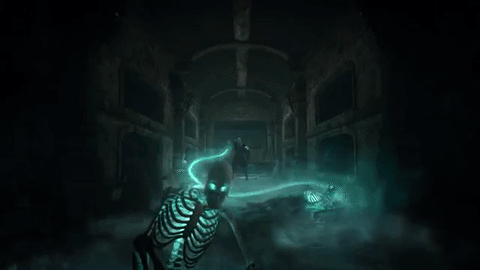
WIZARD
SCHOOL OF NECROMANCY
The star and most likely the official team leader of the party, the Necromancy Wizard is the focal point of this team composition. With their 6th level feature: Undead Thralls, the Necromancy Wizard adds their Wizard level (6-20) to each undead's hit points, and their proficiency bonus (3-6) to each undead's weapon attack damage. This means that the Necromancy Wizard makes the strongest possible undead thralls in the game. At 14th level, the Necromancer can place any undead under their control with Command Undead. This gives the Wizard the ability to gain a free Wight, a high CR undead like a Nightwalker, or even notable villains like Acerack, Vecna, Strahd Von Zarovich, or Sylas Briarwood. Intelligent Undead can make saving throws, but a simple Feeblemind can take care of that pesky detail.
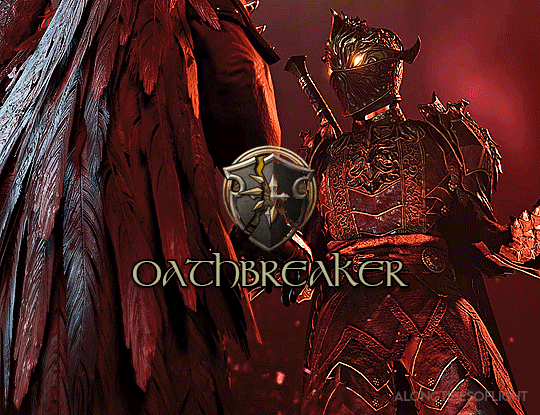
PALADIN
OATHBREAKER
The Oathbreaker Paladin was chosen because of their 7th level feature: Aura of Hate. Any undead within 10 feet of the Paladin adds the Paladin's Charisma modifier (1-5) to all weapon attack damage. At 15th level, that Aura expands to 30 feet. Not only can this stack with the Necromancy Wizard's Undead Thralls feature, making undead near the paladin stronger, but the Paladin does not need to be the one who created the undead. So the Oathbreaker can lead the undead into battle on the front lines, while the Wizard stands further back sniping enemies with cantrips and low level spells. Unfortunately, only one Aura of Hate can effect a single undead, but in theory, one Necromancy Wizard with 3-4 spaced out oathbreakers each with a 10 or 30 ft aura can effectively organize your undead army into tight formation battalions. But there are other good allies to have in the game.
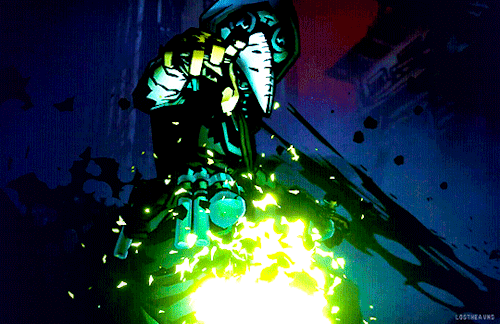
CLERIC
GRAVE DOMAIN
We want the Grave Cleric for many reasons. Firstly, they get a lot of necromancy spells, so while their horde won't be as strong as the Wizard's they too can create a horde of undead, making an even bigger army. Their Channel Divinity: Path to the Grave makes it so that an enemy is vulnerable to the damage of the next attack that hits them, which sets up nicely for the Oathbreaker to lay down a devastating smite, or the Necromancy Wizard to ensure a fresh thrall from their Finger of Death. Sentinel at Death's Door can be used to nullify critical hits, which can keep not only party members, but even undead minions from being obliterated. The wizard's Wight that controls 12 zombies is probably an asset you don't want to risk losing, so having a way to save that valuable asset is useful. And, should the Necromancer forget to reassert control over their horde in time, the Cleric's Destroy Undead feature can help the party mow through the bodies.

DRUID
CIRCLE OF THE SHEPHERD
I know, I know. A Shepherd Druid and a Necromancy Wizard in one party is a DM's nightmare, but there's a reason we're choosing this subclass. It's not the animal summoning, it's the Totem Spirit. See, the Totem Spirit radiates an aura in a 30 ft radius. And that aura bolsters as many creatures as you want within that aura. Meaning that not only can the shepherd provide aerial support with swarms of ravens and buzzards, but that aura also applies to the Wizard's undead horde. The Bear totem grants the undead Temporary Hit Points, and the Unicorn Spirit makes it so that when the Druid heals anyone outside the aura, they're also healing every creature inside the aura. While they can't target undead creatures with their healing spells, the aura's healing factor does not exclude undead, allowing the Druid to heal a party member, and in doing so, heal every undead within 30 feet of the totem spirit. The fact that the Druid can summon a stronger horde of animals is just a nice little cherry on top. There's also nothing saying you can't reflavor your animal army as being undead animal corpses with DM approval to fit in with the necromantic themes.

WARLOCK
FATHOMLESS PATRON
This is the least useful of the five, but it does have its uses, so while it is the most expendable of the options, there are reasons to use it if you have a five man party. At 6th level, the Fathomless Warlock gains the ability Guardian Coil. Their summoned tentacle can defend a single ally creature, reducing damage the creature takes by 1d8, or 2d8 at level 10. At 14th level, Fathomless Plunge can be used to teleport the Warlock and up to five other creatures to any source of water within 1 mile. The Fathomless Warlock, The Shepherd Druid, and the Grave Cleric can cast Create or Destroy Water, and a puddle is a source of water, letting the warlock teleport fresh undead to the front lines, or move injured undead to the backlines. If the Druid has their Unicorn Totem, this can be a useful way to teleport party members or important undead like Wights to the Totem's aura, and giving the party ways to move important creatures. The teleported creatures also do not need to be near the Warlock, they simply need to be able to see them within 30 feet, allowing the warlock to give the undead horde greater mobility. Make your patron Davy Jones, The Captain of the Flying Dutchman, or the Eldritch Lord of Shipwrecks to keep on brand with the themes of undeath and necromancy within the party, tying yourself to those lost to watery graves.
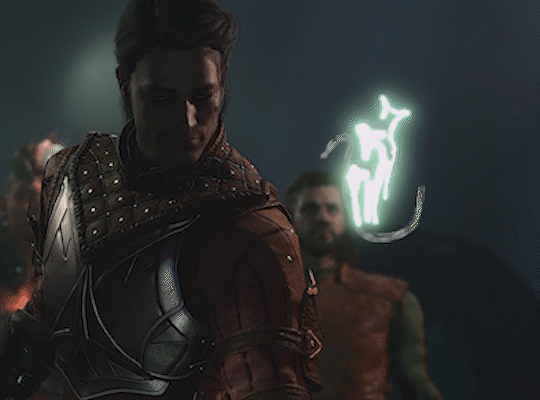
SPELLS AND SYNERGY
The core spells of Animate Dead, Create Undead, Danse Macabre, and Finger of Death can be used to create undead thralls. Wizards get all four spells, while the Cleric only gets Animate Dead and Create Undead. Oathbreakers also get Animate Dead, but only get up to 5th level spell slots. Warlocks can learn Animate Dead through an Eldritch Invocation, but only once per long rest, and only at 3rd level. Warlocks also learn Danse Macabre and Finger of Death. They also get Create Undead, but can only cast it at 6th level.
Both the Warlock and the Wizard get access to Negative Energy Flood, which can be used to heal an undead, or to damage a living target. Like Finger of Death, a creature killed by Negative Energy Flood rises as a zombie.
Aura of Vitality is a spell for Clerics, Druids, and Paladins that creates a healing aura within 30 ft of the caster. The spell's text does not exclude undead from benefitting from this aura, however only one creature can be healed with a bonus action. While this isn't super useful given it only heals one creature, the Druid using this spell to trigger their Unicorn Totem every turn with a bonus action does make this more useful, as you're able to heal the undead army multiple turns in a row while only using one spell slot. And unlike Healing Spirit, the initial healing can also be applied to an undead. The only caveat is that the healing needs to go a creature outside of the unicorn totem's aura in order to trigger the healing. Luckily, the Totem does not have to be within any given distance of the Druid, which gives the Druid more flexibility in their positioning.
Every creature that can be created with Animate Dead and Create Undead (Skeletons, Zombies, Ghouls, Ghasts, Wights, and Mummies) are immune to Poison damage. As such, AoE spells that deal Poison damage, such as Cloudkill can be dropped on top of your undead horde without harming them, but harming any living enemy near them. Your undead can also attempt to grapple foes, holding them in the Cloudkill, preventing them from leaving as they suffocate. The Necromancy Wizard is the only member of the party that can learn Cloudkill.
Both the Grave Cleric and the Druid can learn Antilife Shell, which pushes living creatures away from the caster, while allowing undead creatures to move through the shell harmlessly. This can be a great way to keep Strength-based enemies at a distance. Unfortunately the shell is not a proper force field, as weapon and spell attacks can still pass through, so this is not a way to protect the Wizard. It only keeps melee-ranged threats at bay.

BALDUR'S GATE III
While we can't recreate this team set-up perfectly in Baldur's Gate III, we can still do a weaker version with four party members: TAV as a Necromancy Wizard, Astarion or Karlach as an Oathbreaker, Shadowheart as really any Cleric subclass, and Wyll as a Fiend Warlock with a Pact of the Tome. The Tome will allow Wyll to cast Animate Dead and Create Undead, Tav and Shadowheart will also be able to create undead, and Astarion or Karlach will be able to use their aura of hate to strengthen those undead thralls. It's not as good as what we built above, but short of mods, it's the best we can do. It doesn't really matter who's what, this is just an example of a party composition. Astarion could just as easily be the necromancer and TAV the Oathbreaker, you could have Gale as the Necromancer, or Lae'zel as the Oathbreaker. What really matters are the classes. The Cleric can still clear any undead that turn on the party, the paladin still bolsters the already stronger undead, and every member of the party is pretty much able to make equally strong undead, the Wizards undead are just juiced up to the max.
#necromancy#necromancer#dungeons and dragons#dungeons & dragons#dnd#dnd 5e#wizards of the coast#undead#grave domain#oathbreaker#circle of the shepherd#fathomless warlock#wotc#dnd fifth edition#dnd 5th edition#critical role#baldur's gate 3
49 notes
·
View notes
Text
The Monster Prom PCs as a DnD Party
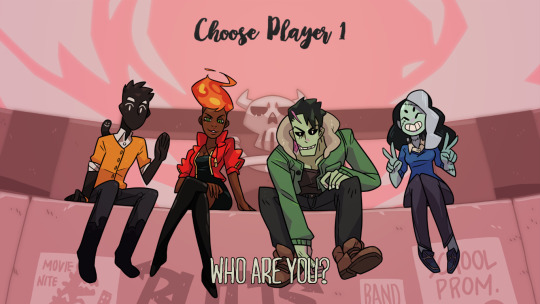
This is a Party Build I’ve been wanting to do for a while, but I’ve been putting off because as the Player Characters, they’re all effectively the same characters. They all get the same dialogue options, so in the first game, they weren’t really characters. The game was more about what deranged and downright horrible atrocities you’re willing to commit so that Damien will ask you commit arson with him, or to get Vera to step on you. However, since Monster Prom took off, the developers have fleshed out the PCs, and Monster Prom Reverse is scheduled to be one of the upcoming games where you plays as one of the Love Interests, now with the intent on pursuing the Playable Characters as your objects of desire. With the recent release of Monster Prom 3: Monster Roadtrip, I figured now was the time to try and tackle these characters. The new playtest rules for One DnD have recently revealed that the future of DnD will have 4 class categories, so while I’ll try to get one from each of the four, I’m also trying to stay close to their characters.
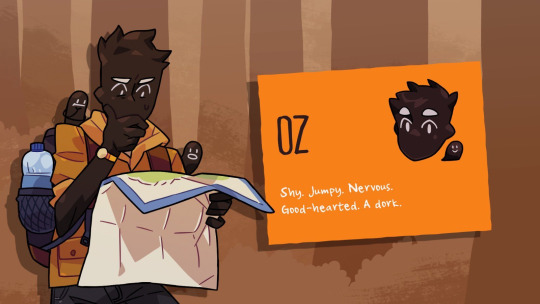
Oz is the physical embodiment of Fears and Phobias. According to his actual character lore, Oz is shy, lacks charisma, and has a passion for dorky and niche hobbies, like board games and comic books. He often fears that his peers will look down on him for his interests, and he often wishes he could be more bold and outgoing. While he’s shy and enjoys his alone time, Oz is described as an Ambivert. Among his friends, Oz is the most cautious. While he himself is reserved and anxious, he enjoys surrounding himself with loud and interesting people. Though he doesn’t like it when those around him take it too far, and he doesn’t enjoy being mean or hurting people. Oz has the best relationship with Vicky, due to her supportive and nurturing personality mixing well with his nervous and insecure nature. Brian’s chill is a comfort to Oz, as he knows that Brian is dependable, and consistent. Meanwhile, the daring Amira tends to clash with Oz due to their vast differences. However, their differences also gives them strengths where the other is weak. Oz is the voice of caution that Amira lacks, and Amira pushes Oz out of his comfort zone to try new things. In the Auditorium, Oz is cast in the role of a swashbuckling musketeer type, while in a canon photo of Oz playing DnD, he seems to be playing a Bard. In Monster Roadtrip, Oz’s sprite in the Dungeon is that of a Bard scared of a level 1 rat.
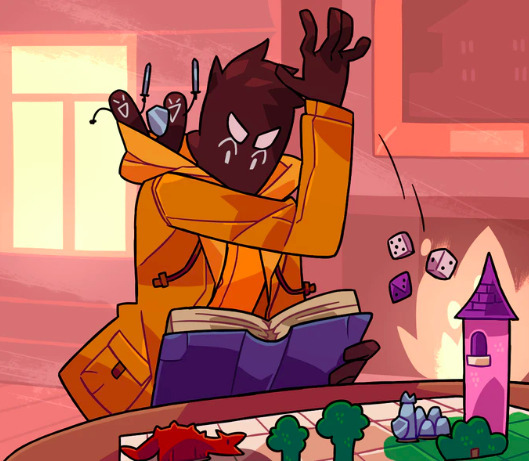
Oz’s race is difficult to define, he’s just the personification of fear and phobias. We’ll just label him as a Custom Lineage and pick up Shadow Touched for his free feat, teaching him Inflict Wounds and Invisibility. We’ll give him +2 CHA, +1 DEX for his stats, and Dark Vision.
None of the characters really have backgrounds per se, so we’ll just assign him two skills: Intimidation and Persuasion.
In terms of group dynamic, Oz seems to be the squishy support of the group. He’s the most nervous one and doesn’t like fights or confrontation. He clearly cares about his allies, enough that he’d fight to protect them, but he’s clearly afraid of getting hurt, suggesting he’d have a low hit die. Of the four party roles, I’d probably suggest he’s either an Expert Class, since they can serve the party outside of combat, or a Healer class, since supporting their friends is important.
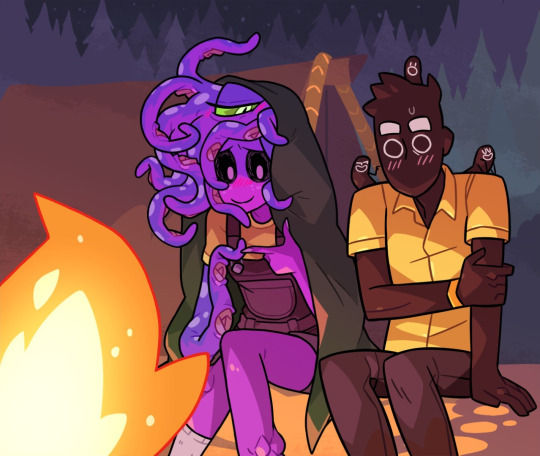
BARD
COLLEGE OF WHISPERS
I know Bard seems counter intuitive for someone so shy as Oz, but it makes the most sense for his character. He supports his friends and encourages them, but doesn’t live for the spotlight. Not all bards have to love being the center of attention. And some people love singing and dancing, but hate performing for others. The main reason we want Bard though, is because Oz is the embodiment of Fear. And we want him to grab the spells he needs to terrify others. As a Bard, he gets any three skills. I’ll give him History, Perception, and Stealth. He also gets Skill Expertise, and we’ll put his Expertise into Intimidation, Stealth, Persuasion, and Perception.
OZ’S SPELL BOOK
C Mage Hand, Mind Sliver, Minor Illusion, Prestidigitation
1 Dissonant Whispers, Inflict Wounds, Tasha’s Hideous Laughter
2 Invisibility, Mind Spike, Phantasmal Force
3 Antagonize (UA), Fear
4 Phantasmal Killer, Raulothim’s Psychic Lance
5 Dream, Mislead, Modify Memory
6 Eyebite
7 Etherealness
8 Feeblemind
9 Psychic Scream
OZ’S MAGICAL SECRETS
10 Arms of Hadar, Hunger of Hadar
14 Summon Aberration, Synaptic Static
18 Maddening Darkness, Weird

Amira is the spunky Fire Djinn of the group. Not much is officially stated of her personality, but she seems to be a trailblazer with a bold streak. She doesn’t hesitate to push ahead and try new things. She also seems to be almost effortlessly popular with a lot of the other students, though considering the PCs all seem to be something of losers, it’s possible that she’s just putting on a cool and popular facade. The only thing we know for certain about Amira is that she seems to lack patience, and isn’t much of an artist. Her attempt to make a sculpture of Vera didn’t come out looking so hot. In the Auditorium, Amira’s outfit looks like some sort of dark witch, but it’s hard to discern past that. She could be a warlock, a voodoo witch doctor, an evil shaman, a witch, or just some sort of dark mage. It’s not entirely clear. She reuses this outfit in Monster Roadtrip as her Dungeon attire where she’s burned the entire top half of a skeleton to nothing and is preparing to do the same to another.

Amira’s race is the easiest of the four. She’s a Fire Genasi. She gets +2 CHA, +1 CON.
The Monster Prom PCs don’t really have backgrounds, so we’ll give her proficiency with Persuasion and Deception.
In terms of group dynamic, it’s clear that Amira is the one to lead the charge into peril, overflowing with charisma. She’s also the only one of the four proven to be able to perform small feats of fire magic. So of the party, she’s the one to be in the role of the party’s primary Mage. Since her spell list is pretty much just fire, you’ll absolutely want to grab Elemental Adept - Fire to keep enemies from resisting your fire damage.

SORCERER
DRACONIC BLOODLINE (RED)
I know that her bloodline comes from Efreetis and Elementals, but there’s not a printed sorcerer subclass that fits that mold. Pyromancy and Phoenix Sorcerer are both dead UA. Draconic Bloodline is the only one that can technically align with making her a better fire mage. Mostly because the 6th level feature adds her Charisma modifier to fire damage spells. As a Sorcerer, we’ll give Amira proficiency with Arcana and Intimidation.
AMIRA’S SPELLBOOK
C Control Flames, Create Bonfire, Fire Bolt, Green-Flame Blade, Light, Mending
1 Burning Hands, Chromatic Orb
2 Flaming Sphere, Scorching Ray
3 Ashardalon’s Stride, Fireball
4 Fabricate, Fire Shield, Wall of Fire
5 Creation, Immolation
6 Investiture of Flame
7 Fire Storm
8 Incendiary Cloud
9 Meteor Swarm
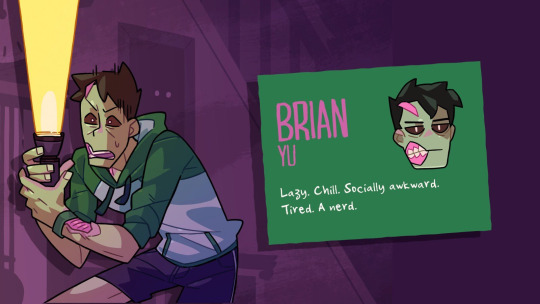
Brian is a Zombie with a very “Go with the Flow” personality. He has no strong sense of ambition or drive, preferring to relax and veg out. His hobbies mainly include eating, sleeping, and smoking weed. But, occasionally, his intense side comes out when he’s playing sports or video games. He’s also described as being something of a foodie, and is noted as a ride-or-die friend. He sometimes creates fan work for the fandoms he’s in, but isn’t big on sharing this side of himself with others. Brian and Amira are surprisingly good friends, as her intensity often lights a fire under his butt, while his chill mindset gets her to stop and enjoy the moment. He appreciates that Oz is a bit more chill than most of their classmates, good for when the urge to do nothing rears its head. There’s no official stance on his dynamic with Vicky. In the Auditorium, Brian wears a dragon onesie as his costume. In Monster Roadtrip, when Brian goes to the Dungeon, he’s seen looting a treasure chest while ignoring an enemy skeleton. Due to holding the box in front of him, it’s hard to say for certain what his outfit is, but he seems to be some sort of Rogue or Ranger.

For his Race, we’ll label Brian as a Reborn Human, since that’s the closest a player character can get to playing as a Zombie in DnD. We’ll give him +2 DEX, +1 WIS
The Monster Prom PCs don’t really have backgrounds, so we’ll just make him proficient with Athletics and Acrobatics.
Brian’s known for his chill attitude, so he’s unlikely to raise a big fuss about taking charge or calling the shots. He’s cool just following other people’s lead. But, he will absolutely throw himself in the line of fire to protect those he cares about. He is a true ride-or-die that never abandons his comrades, which slots him into the role of party Tank. As such, you’ll want to be sure and grab the Tough feat for him so he can take more hits on the chin.

MONK
WAY OF LONG DEATH
Brian was by far the hardest of the four to assign a class to. I figured based on his size, athleticism, and ride-or-die mentality that Brian made the most sense as the Tank of the party. I landed on Monk almost arbitrarily, but I think it makes sense. Like Brian, Monks are rather Zen, valuing inner peace. They’re also not super complicated, only needing to keep track of their ki pionts in combat. They also regain ki points on a short rest, which encourages Brian to take frequent naps, letting him work a core character trait into a roleplaying necessity. Way of Long Death just made sense because he’s already Dead and it seemed to fit. As a Monk, we’ll give Brian proficiency in Insight and Stealth. However, I’m willing to admit that Monk is not a perfect fit. Firstly, for being in the Warrior group, his hit die is only a d8, same as a Bard and a Warlock. Secondly, Monks are the fastest class, and Brian is a Zombie. Lastly, Monk has been sorely neglected by WotC. While they’ve been hard at work trying to fix the Ranger, the Monk has not gotten the same amount of love, leaving it underdeveloped. As such, while Monk is a fine fit for Brian, I want to give him two build suggestions, just in case you’re like me, and you like Brian, but you don’t like Monk.

WARLOCK
UNDEAD PATRON (PACT OF THE BLADE)
I did not land on Warlock just because Brian likes sleeping and Warlocks constantly stop to take short rests, though that’s certainly a bonus. Rather, I chose Warlock because it gives Brian a lot of what Monk was giving him, like the d8 hit die, and the option to be a front-liner through the blade pact. I chose Undead for much the same reason I chose Long Death for Monk. However, due to his Go-with-the-Flow nature, Brian is a natural ride-along for his love interest, to the point where you could just make his Patron the person he’s dating.

Obviously, if you choose Warlock, make your racial stats +2 CHA, +1 CON or STR. As a Warlock, we’ll give Brian skills in Persuasion and Intimidation. For the spell list below, I’m using the Undead Patron, but if you want to go the route of Brian gaining powers from his lover, feel free to change up his spell list however you see fit. For anyone who didn’t make the list, they don’t have an obvious counterpart for a DnD Patron, so I left them off. Dealer’s choice on that one.
C Chill Touch, Eldritch Blast, Mage Hand, Toll the Dead
1 Armor of Agathys, False Life, Hex
2 Darkness, Cloud of Daggers, Shadow Blade
3 Animate Dead*, Spirit Shroud, Summon Undead, Vampiric Touch
4 Blight, Death Ward, Spirit of Death (UA)
5 Antilife Shell, Enervation, Negative Energy Flood
6 Create Undead
7 Finger of Death
8 Dominate Monster
9 Blade of Disaster
BRIAN’S ELDRITCH INVOCATIONS
2 Agonizing Blast
2 Armor of Shadows
5 Thirsting Blade
7 Relentless Hex
9 Undying Servitude
12 Life Drinker
15 Lance of Lethargy
17 Maddening Hex
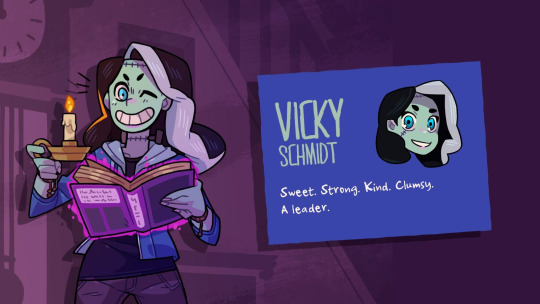
Vicky is the bubbly and sweet Frankenstein’s Monster of the group. She has a hunger for learning and knowledge, is an overachiever, and is fascinated with all things electronic, mechanical, and cute. The only friendship that’s been expanded upon is her friendship with Oz, though I doubt she’d have too much of an issue with Amira or Brian. Though, her being an energetic overachiever might put her in slight conflict with the lazy and unambitious demeanor of Brian. In the Auditorium, she dons the costume of a knight in shining armor. Like Amira, she reuses her Auditorium costume in Monster Roadtrip if you stop at the Dungeon, though she’s swapped out her sword for a two-handed giant mace.

Like Brian, Vicky is a reanimated corpse, and therefore is a Reborn Human. We’ll give her +2 WIS, +1 CON.
Again, we don’t really have backgrounds, so we’ll just base her skills on Frankenstein. Nature is probably the skill for Science, and bringing a corpse to life requires understanding the gross, squishy parts of life, so we’ll give her Medicine as her other skill.
In terms of Party Composition, Vicky is the voice of reason. She’s the defacto team leader, and the mom friend who takes care of everyone else. As such, we can guess that either her Wisdom or her Intelligence will be her best stat.
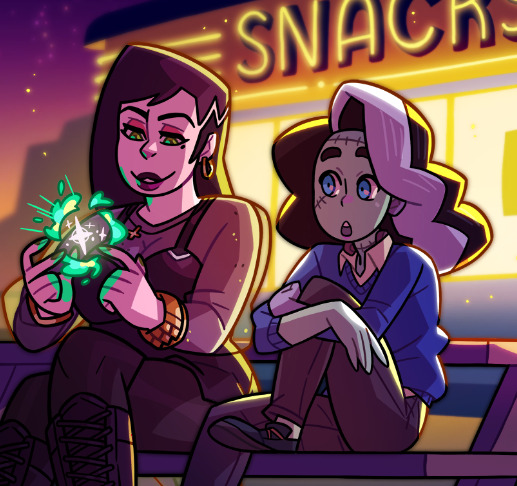
CLERIC
GRAVE DOMAIN
I know this probably seems redundant, given that the Undead Warlock version of Brian is a necromancer, but I think this is fitting for Vicky. Cleric is one of the best support classes in the game, and feels true to Vicky. She’s known for being reasonable and level-headed, a clear sign of a wise leader. Brian breathes life into those who have already passed, Vicky keeps the living from dying until she dismisses them. For her Cleric skills, we’ll give her Insight to know when her friends need a hug, and Persuasion so that she can convince the #1 prince of Hell that it’s a good idea to replace someone’s organs with live possums.
VICKY’S SPELL RECOMMENDATIONS
1 Bane False Life
2 Gentle Repose, Ray of Enfeeblement
3 Revivify, Vampiric Touch
4 Blight, Death Ward
5 Antilife Shell, Raise Dead
C Guidance, Resistance, Sacred Flame, Spare the Dying, Thaumaturgy, Toll the Dead
1 Bless, Cure Wounds, Inflict Wounds, Sanctuary
2 Hold Person, Spiritual Weapon, Warding Bond
3 Aura of Vitality, Mass Healing Word, Remove Curse, Speak with Dead, Spirit Guardians, Spirit Shroud
4 Aura of Life, Guardian of Faith
5 Flame Strike, Mass Cure Wounds
6 Harm, Heal, Sunbeam
7 Regenerate, Resurrection
8 Sunburst
9 Mass Heal

I’m rather pleased with how evenly split this party came out. Oz is the Expert, Amira is the Mage, Brian is the Tank, and Vicky is the Healer. They feel well-balanced. They each have a role to play without stepping too hard on each other’s toes. Even if both Vicky and Brian end up being necromancers, they still stand out from one another without egregious overlaps in their spells. They’re still bringing different things to the table. If this post does well, I’ll cover the Original Six Love Interests next, then move on to the Supplementary Love Interests, and then maaaaaybe I’ll cover the Secret Unlocks Love Interests if they’re interesting enough to get made. And if I can actually unlock those secret event routes for myself.
131 notes
·
View notes
Text
Scooby-Doo's been on my mind lately, so I thought I'd reblog this again.
If I Created a Scooby-Doo Series

Since I doubt I would ever be presented with an opportunity to pitch a Scooby-Doo series to Warner Bros themselves, I might as well share my thoughts online for how I would rework the classic characters into a new team dynamic. For me, there are two issues with Scooby-Doo I'm looking to address:
1. Velma stops carrying the team. By giving everyone a niche talent or expertise, they feel more like a team working together, instead of Velma pulling all the weight on a group assignment with her friends.
2. Why does everyone want to be in a mystery solving club? The origin of their friendship interests me.

Fred Jones
I imagine Fred in my version as the son of a detective, either PI or police. That parent is dead, leaving Fred with a single parent and wanting to live up to his dead parent's legacy by becoming a detective or forensics investigator. Obviously, the skills he would bring would include criminal profiling, procedural knowledge, and possibly laws. Plus his traps, of course. It's his area to figure out suspects and their motives. He started Mystery Inc as a one-man operation. He pulled in Velma due to her knowledge of chemistry making her ideal for analyzing clues and data. He may know about forensics, but Velma actually knows how to do it.

Velma Dinkley
Velma is the egghead researcher and preppy student government member brought into the club in the first episode when Fred asks her to analyze the clue he discovered. Fascinated by riddles, puzzles, and secrets, Velma is persuaded to help by means of appealing to her curiosity and scientific mind. She primarily handles chemistry, physics, and robotics. She analyzes the clues mostly, and is great at connecting the dots.
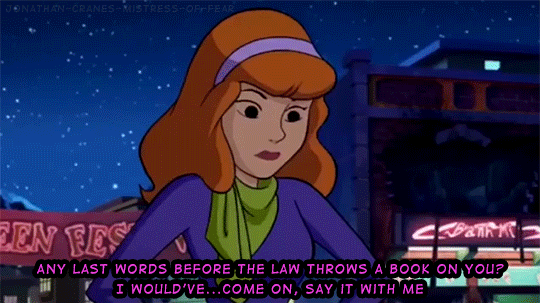
Daphne Blake
The Daphne of my series would be a theater kid through and through, as well as a gymnast, cheerleader, and most importantly, a reporter for the school newspaper. She falls into the first mystery while sleuthing for a scoop for her column and agrees to help the gang so she can report their activities. Her background in theater means she's well versed in make-up, costuming, and special effects, and figures out how the monster is pulling off their disguise. She also serves as the face, managing their social media presence, website, image, and whatever else.

Shaggy and Scooby
Covering the last two together, Shaggy would change the most, becoming a paranoid conspiracy theorist hacker, allowing him to serve a non combat role. Shaggy's obsession with cover-ups and conspiracies makes him interested in the mysteries, even if he is afraid of the monsters. His role in the group, aside from being the hacker, is that he would know the lore of whatever supernatural creature the criminal was using. So, if a criminal posed as the Jersey Devil, Shaggy would be the one to explain the monster. He would also catch on if the monster does things that break the lore, such as a fairy touching iron or the headless horseman crossing running water. In a way, unmasking the fakes is also somewhat therapeutic for him. Shaggy in my mind has some health condition, and Scooby is his service dog, especially since large dogs like Great Danes are good support breeds. Shaggy joins the party either because he was investigating an unrelated paranormal sighting, or because the gang needed to hack into security cameras, and came to Shaggy.

In terms of identity and tone, I'd angle more for the Mystery Incorporated era, when character, lore, and an ongoing mystery breathed new life into the franchise. I liked the darker and more mature viewpoint, and would want to revive it in my own version. Especially in the age of streaming, a serialized Scooby-Doo is more likely to work than it did as a commercial tv show on broadcast television.
598 notes
·
View notes
Text
How to Play the Ultimate Dark Mage in DnD 5e

With Halloween right around the corner, I thought I'd delve into an idea I don't see talked about very much: building the ultimate black mage in DnD. For this build, we're not trying to be the best necromancer, or the best damage dealer. What we want is to find the build that grants us the widest arsenal of as many dark magical powers as possible. In order to give the Sorcerer a fair chance, we're going to homebrew to grant the Sorcerer 25 spells known instead of 15, otherwise there's no chance the Sorcerer is going to win.

DARK MAGIC SPELL LIST
NECROMANCY
False Life (Artificer, Sorcerer, Warlock*, Wizard, Death Cleric, Grave Cleric)
Animate Dead (Cleric, Warlock*, Wizard, Oathbreaker Paladin)
Speak with Dead (Bard, Cleric, Wizard, Undead Warlock, Undying Warlock)
Spirit Shroud (Cleric, Paladin, Warlock, Wizard)
Summon Undead (Warlock, Wizard)
Summon Warrior Spirit (sorcerer, Warlock, Wizard)
Death Ward (Cleric, Paladin, Undead Warlock, Undying Warlock, Alchemist Artificer)
Spirit of Death (Sorcerer, Warlock, Wizard)
Antilife Shield (Druid, Death Cleric, Grave Cleric, Undead Warlock)
Danse Macabre (Warlock, Wizard)
Create Undead (Cleric, Warlock, Wizard)
Soul Cage (Warlock, Wizard)
Clone (Wizard)
NECROTIC DAMAGE
Chill Touch (Sorcerer, Warlock, Wizard)
Toll the Dead (Cleric, Warlock, Wizard)
Inflict Wounds (Cleric, Oathbreaker Paladin)
Wither and Bloom (Druid, Sorcerer, Wizard)
Vampiric Touch (Sorcerer, Warlock, Wizard, Death Cleric, Grave Cleric)
Blight (Druid, Sorcerer, Warlock, Wizard, Death Cleric, Grave Cleric, Oathbreaker Paladin, Alchemist Artificer)
Destructive Wave (Paladin, Tempest Cleric)
Enervation (Sorcerer, Warlock, Wizard)
Negative Energy Flood (Warlock, Wizard)
Circle of Death (Sorcerer, Warlock, Wizard)
Finger of Death (Sorcerer, Warlock, Wizard)
Symbol (Bard, Cleric, Druid, Wizard)
Abi-Dalzim's Horrid Wilting (Sorcerer, Wizard)
Power Word: Kill (Bard, Sorcerer, Warlock, Wizard)
SHADOW MAGIC
Darkness (Sorcerer, Warlock, Wizard, Land (Swamp) Druid, Oathbreaker Paladin)
Shadow Blade (Sorcerer, Warlock, Wizard)
Summon Shadowspawn (Warlock, Wizard)
Shadow of Moil (Warlock)
Maddening Darkness (Warlock, Wizard)
PESTILENCE
Acid Splash (Artificer, Sorcerer, Wizard)
Poison Spray (Artificer, Druid, Sorcerer, Warlock, Wizard)
Ray of Sickness (Sorcerer, Wizard, Death Cleric, Alchemist Artificer)
Tasha's Caustic Brew (Artificer, Sorcerer, Wizard)
Blindness/Deafness (Bard, Cleric, Sorcerer, Wizard, Spores Druid, Fiend Warlock, Undead Warlock, Undying Warlock)
Melf's Acid Arrow (Wizard, Land (Swamp) Druid, Alchemist Artificer)
Ray of Enfeeblement (Warlock, Wizard, Death Cleric, Grave Cleric)
Stinking Cloud (Bard, Sorcerer, Wizard, Land (Swamp, Underdark) Druid, Fiend Warlock)
Sickening Radiance (Sorcerer, Warlock, Wizard)
Vitriolic Sphere (Sorcerer, Wizard)
Cloudkill (Sorcerer, Wizard, Alchemist Artificer, Death Cleric, Land (Underdark) Druid, Spores Druid, Conquest Paladin, Undead Warlock)
Contagion (Cleric, Druid, Oathbreaker Paladin, Undying Warlock)
Disintegrate (Sorcerer, Warlock, Wizard)
Harm (Cleric, Druid)
FIENDISH MAGIC
Hellish Rebuke (Warlock, Oathbreaker Paladin)
Spirit Guardians (Cleric, Crown Paladin)
Summon Lesser Demons (Warlock, Wizard)
Summon Greater Demon (Warlock, Wizard)
Infernal Calling (Warlock, Wizard)
Planar Binding (Bard, Cleric, Druid, Wizard)
Summon Fiend (Warlock, Wizard)
Planar Ally (Cleric)
Tasha's Otherworldly Guise (Sorcerer, Warlock, Wizard)
ELDRITCH MAGIC
Eldritch Blast (Warlock)
Arms of Hadar (Warlock)
Hunger of Hadar (Warlock)
Edvard's Black Tentacles (Wizard, Great Old One Warlock)
CURSES & EVIL
Infestation (Druid, Sorcerer, Warlock, Wizard)
Bane (Bard, Cleric, Warlock*, Vengeance Paladin)
Hex (Warlock)
Tasha's Hideous Laughter (Bard, Wizard, Great Old One Warlock)
Bestow Curse (Bard, Cleric, Wizard, Conquest Paladin, Oathbreaker Paladin)
Dispel Evil & Good (Cleric, Paladin)
Hallow (Cleric, Fiend Warlock)
Insect Plague (Cleric, Druid, Sorcerer)
Eyebite (Bard, Sorcerer, Warlock, Wizard)
Flesh to Stone (Warlock, Wizard)
Power Word: Pain (Bard, Sorcerer, Warlock, Wizard)
MIND GAMES & NIGHTMARES
Mind Sliver (Sorcerer, Warlock, Wizard)
Cause Fear (Warlock, Wizard)
Dissonant Whispers (Bard, Great Old One Warlock)
Silvery Barbs (Bard, Sorcerer, Wizard)
Crown of Madness (Bard, Sorcerer, Warlock, Wizard, Oathbreaker Paladin)
Tasha's Mind Whip (Sorcerer, Wizard)
Antagonize (Bard, Sorcerer, Warlock, Wizard)
Enemies Abound (Bard, Sorcerer, Warlock, Wizard)
Fear (Bard, Sorcerer, Warlock, Wizard, Conquest Paladin)
Phantasmal Killer (Wizard, Hexblade Warlock, Genie Warlock)
Dream (Bard, Warlock, Wizard, Land (Grassland) Druid)
Dominate Person (Bard, Sorcerer, Wizard, Order Cleric, Trickery Cleric, Conquest Paladin, Oathbreaker Paladin, Archfey Warlock, Great Old One Warlock)
Modify Memory (Bard, Wizard, Trickery Cleric)
Synaptic Static (Bard, Sorcerer, Warlock, Wizard)
Mental Prison (Sorcerer, Warlock, Wizard)
Dominate Monster (Bard, Sorcerer, Warlock, Wizard)
Feeblemind (Bard, Druid, Warlock, Wizard)
Weird (Warlock, Wizard)

BEST CLASS FOR DARK MAGIC
BARD
Necromancy: 1
Necrotic Damage: 1
Shadow Magic: 0
Pestilence: 2
Fiendish Magic: 1
Eldritch Magic: 0
Curses & Evil: 5
Mind Games & Nightmares: 10
Total: 20 + Magical Secrets (4-6)
CLERIC
Necromancy: 5, 7 (Death & Grave)
Necrotic Damage: 3, 5 (Death & Grave), 4 (Tempest)
Shadow Magic: 0
Pestilence: 3, 6 (Death), 4 (Grave)
Fiendish Magic: 3
Eldritch Magic: 0
Curses & Evil: 5
Mind Games & Nightmares: 0, 2 (Trickery), 1 (Order)
Total: 19
Death: 26
Grave: 24
Trickery: 21
DRUID
Necromancy: 1, 2 (Spores)
Necrotic Damage: 3
Shadow Magic: 0
Pestilence: 3, 5 (Spores), 5 Land (Swamp), 5 Land (Underdark)
Fiendish Magic: 0
Eldritch Magic: 0
Curses & Evil: 1
Mind Games & Nightmares: 1, 2 Land (Grassland)
Total: 9
Spores: 12
Land (Swamp): 11
Land (Underdark: 11
SORCERER
Necromancy: 3
Necrotic Damage: 9
Shadow Magic: 2
Pestilence: 10
Fiendish Magic: 1
Eldritch Magic: 0
Curses & Evil: 4
Mind Games & Nightmares: 11
Total: 40
DIVINE SOUL SORCERER
Necromancy: 8
Necrotic Damage: 12
Shadow Magic: 2
Pestilence: 12
Fiendish Magic: 4
Eldritch Magic: 0
Curses & Evil: 8
Mind Games & Nightmares: 11
Total: 57
WARLOCK
Necromancy: 9, 12 (Undead)
Necrotic Damage: 9
Shadow Magic: 5/5
Pestilence: 4, 6 (Fiend), 6 (Undead)
Fiendish Magic: 6
Eldritch Magic: 3, 4/4 (Great Old One)
Curses & Evil: 6, 7 (Fiend), 7 (Great Old One)
Mind Games & Nightmares: 12, 14 (Great Old One)
Total: 54
Fiend: 57
Great Old One: 58
Undead: 59
WIZARD
Necromancy: 11
Necrotic Damage: 12
Shadow Magic: 4
Pestilence: 11
Fiendish Magic: 6
Eldritch Magic: 0
Curses & Evil: 6
Mind Games & Nightmares: 17
Total: 67

Not only does Wizard come out on top with an impressive 67 dark magic spells, it is the only class that can learn all 67 spells. The Warlock learns 15 spells and 4 Mystic Arcanum, plus a few more through Eldritch Invocations, Clerics prepare level + WIS so they'll never prepare more than 25, and we had to cheat to give the Divine Soul Sorcerer 25 spells, or else it only gets a measly 15 spells plus one spell based on the alignment of your divine bloodline. We're also cheating a little with the mind games and nightmares category as while mental manipulation is scary and evil, it isn't necessarily the stereotypical evil one invokes with a dark mage. Although Wizard is the clear winner, it's worth pointing out certain interesting data. The Undead Warlock is the master of Necromancy, with the Wizard close behind at 11, separated only by access to Death Ward. Warlock is also the master of Shadow Magic and Eldritch Magic, but that's kind of the Warlock's whole shtick. The Divine Soul Sorcerer is the master of Pestilence magic, making it a great fit for a Plague Doctor type character, as well as Curses & Evil magic, narrowly beating out the Fiend Warlock. The Wizard is the clear master of Mind Games & Nightmares, and the Wizard and Divine Soul Sorcerer are tied at using Necrotic Damage spells. Wizard and Warlock are evenly matched at wielding Fiendish Magic. While the Bard is pretty much restricted to curses and mind games, it is possible to build a bard that uses exclusively dark magic. They just won't be the greatest dark mage of all time. In terms of who wins the most categories, the Divine Soul Sorcerer wins Pestilence, Curses & Evil, and ties for Necrotic Damage. Without considering subclasses, however, Wizard wins Necromancy, Mind Games & Nightmares, and ties for both Fiendish Magic and Necrotic Damage.

THE BUILD
There are a few good choices for race when building the ultimate dark mage. The Fallen Aasimar's Necrotic Shroud feature adds proficiency bonus Necrotic damage to every attack while the necrotic shroud is active. They also get darkvision and resistance to both necrotic and radiant damage. The Dhampir not only gets dark vision, it lets you stop breathing and make vampiric bite attacks to regain hit points. Reborn are even harder to kill, with advantage against poison, and disease, resistance to poison damage, and advantage on death saves, on top of not needing to eat, drink, sleep, or breathe. But they don't get dark vision. And of course, the Custom Lineage can give your dark mage 60 ft of darkvision, and any feat, letting them take feats like Magic Initiate, Resilient (CON), Shadow-Touched, Eldritch Adept, and more. Ultimately, I feel that the Fallen Aasimar and Reborn are the strongest candidates as they are innately dark and creepy, whereas the Custom Lineage can be made dark and creepy. We'll treat this build as a Fallen Aasimar mostly because Reborns don't get darkvision and that is a pretty huge hindrance. Otherwise, we'd go with Reborn.
Haunted One is the darkest background possible and is also the default background of The Dark Urge in Baldur's Gate 3. We're going to ignore the background's options in order to take Intimidation to bully our way through the campaign and religion to study burials and undead. Since we know we're going Wizard, we'll also pick up arcana to study magic and medicine to study the body, blood, bones, organs, and everything else. However, if you want a sneakier dark mage, you could also go with Deception and Persuasion from our background to maintain a personable façade.

WIZARD
SCHOOL OF NECROMANCY
Of course, necromancy is our subclass of choice. The power to raise a stronger horde of undead and it not being tied to specifically Animate Dead does make the Necromancy Wizard pretty useful. And the Command Undead feature really makes the mastery of dark magic vibe feel earned. There is a case to be made for Evocation. The Overchannel feature that sacrifices HP for damage is very dark mage. However, one feature stacked against an entire subclass of dark magic is no real contest. So, we'll go with the School of Necromancy.
The School of Necromancy also has a feature called Grim Harvest, which heals the Necromancer any time they kill an enemy with a spell, and more-so if it was a Necromancy spell. The spells Wither and Bloom, Vampiric Touch, and Enervation each damage the target with Necrotic damage, then heal the caster by half the damage dealt. These two healing factors can stack, making these very useful spells, and Wither and Bloom and Vampiric Touch can be chosen as Signature Spell and Spell Mastery, giving your necromancer an unlimited use of a way to regain hit points, even if it's rather low. It's more effective as a means to patch oneself up between fights, killing a few squirrels or birds to regain hit points for no cost. A 1 level dip into Life Domain can not only give the Wizard Heavy Armor proficiency and access to the Inflict Wounds spell, it can also further boost the self-healing gained from these three vampiric necromancy spells. Although False Life is on the Wizard spell list, the Eldritch Invocation Fiendish Vigor can give your Wizard a way to spam False Life between every encounter, making them just a little less squishy.

SPELL LIST
C Chill Touch, Infestation, Mind Sliver, Poison Spray, Toll the Dead
1 Cause Fear, False Life, Ray of Sickness, Shield, Silvery Barbs, Tasha's Caustic Brew, Tasha's Hideous Laughter,
2 Blindness/Deafness, Crown of Madness, Darkness, Melf's Acid Arrow, Shadow Blade, Tasha's Mind Whip, Web, Wither & Bloom
3 Animate Dead, Antagonize, Bestow Curse, Enemies Abound, Fear, Speak with Dead, Spirit Shroud, Summon Lesser Demons, Summon Shadowspawn, Summon Undead, Summon Warrior Spirit, Vampiric Touch
4 Blight, Edvard's Black Tentacles, Phantasmal Killer, Sickening Radiance, Spirit of Death, Summon Greater Demon, Vitriolic Sphere
5 Cloudkill, Danse Macabre, Dominate Person, Dream, Enervation, Infernal Calling, Modify Memory, Negative Energy Flood, Planar Binding, Synaptic Static
6 Circle of Death, Create Undead, Disintegrate, Eyebite, Flesh to Stone, Mental Prison, Soul Cage, Summon Fiend, Tasha's Otherworldly Guise
7 Finger of Death, Power Word: Pain, Symbol, Tether Essence*
8 Abi-Dalzim's Horrid Wilting, Clone, Dominate Monster, Feeblemind, Maddening Darkness
9 Imprisonment, Power Word: Kill, Weird

INFERNAL SOUL SORCERER
The Divine Soul Sorcerer did pretty well for itself, so I figured I'd give a 25 spell list known for the DSS as a little Halloween Treat.
C Acid Splash, Chill Touch, Infestation, Mind Sliver, Poison Spray, Toll the Dead
1 Bane, Inflict Wounds, False Life
2 Shadow Blade, Tasha's Mind Whip, Wither and Bloom
3 Animate Dead, Antagonize, Bestow Curse, Spirit Guardians, Vampiric Touch
4 Blight, Spirit of Death, Vitriolic Sphere
5 Cloudkill, Contagion, Enervation
6 Circle of Death, Create Undead, Disintegrate, Harm
7 Finger of Death, Symbol
8 Abi-Dalzim's Horrid Wilting
9 Power Word: Kill
60 notes
·
View notes
Text
Mystery Inc as a DnD Party
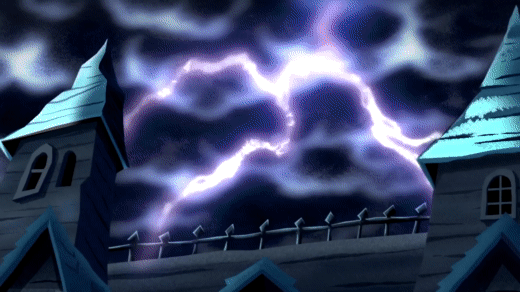
I figured as long as we're still in the vicinity of spooky season, I'd build everyone's favorite gang of teenage mystery solvers as a collective unit. Pulling from their group dynamic to come up with a party roster that will give everyone in the party a designated role.

FRED JONES
PALADIN || OATH OF THE CROWN
INVESTIGATOR BACKGROUND
Skills: Athletics, Insight, Investigation, Persuasion
Freddie is the dimwitted but lovable himbo leader of the team. He's also the muscle, except in moments of athletic skill, when he's outshined by Daphne. His backstory isn't always consistent, but he's usually a jock of some sort. He's not usually all that book smart, but he has a good heart, and inspires his team to success. Paladins who swear an Oath to the Crown hold law and justice above all else, and Fred usually enjoys catching the bad guys and seeing justice served.
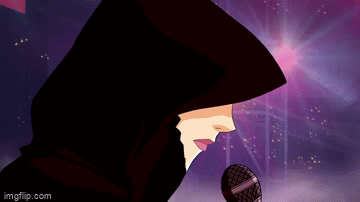
DAPHNE BLAKE
BARD || COLLEGE OF LORE
NOBLE BACKGROUND
Skills: Athletics, Acrobatics, Deception, Insight, Investigation, Persuasion, Sleight of Hand, Performance
As surprising a choice as this might seem, Bard is actually a very appropriate choice for Daphne. Modern Daphne is the most supportive and emotionally intelligent member of the group. From What’s New Scooby-Doo? to Be Cool, Scooby-Doo, Daphne has become the emotional powerhouse of the group. Sensing when her friends are off their game, and offering sage advice to her friends when they need it. She’s also become a very creative girl, skilled in singing, dancing, fashion, design, and more. She’s grown to be the group’s resident skill monkey, almost on par with Velma’s uncanny encyclopedic knowledge on all brainy subjects. If a lock needs picking or the gang needs to get out of a trap, you can count on Daphne to have a nail file, bobby pin, or something else on her person to save the day. She's typically also the face of the group when it's not Fred, meaning she's going to want high Dexterity and Charisma. I chose Lore because Daphne is a reporter in Scooby-Doo on Zombie Island and this is the only real career she's ever had. A lore bard is basically a more magical reporter, and singing the tale of her group's mysterious endeavors.

VELMA DINKLEY
ARTIFICER || ARTILLERIST
SAGE BACKGROUND
Skills: Arcana, History, Investigation, Nature
Velma was the most debatable one for me, as she could be a wizard or an artificer. And I was really leaning toward Wizard, but I had to stay true to Velma's character. She's been a tinkerer and a gadgeteer for a long time now. Velma is absolutely fascinated by robotics. But while Velma in our world can handwave superstitious nonsense, in a world with gods, demons, and real ghosts, I could absolutely see Velma using her knowledge to become a powerful wizard. I even considered the Knowledge Domain Cleric because it's basically designed to be a magical detective, and if Velma was going to worship a deity, it'd be a god of knowledge and reading. Ultimately, I did choose Artificer as it was more in-line with her base character as a skeptic and a scientist, but she would work as a Wizard. Plus, as is, Daphne is the only full-caster in the party.

NORVILLE "SHAGGY" ROGERS
RANGER || CONCLAVE OF THE BEAST MASTER
GUILD ARTISAN BACKGROUND || COOKS & BAKERS
Skills: Animal Handling, Investigation, Stealth, Survival
No surprises here, Shaggy and Scooby are a bonded pair, and the two were going to be joined to each other one way or another. Scooby is technically a Beast of the Land, and there's no Great Dane stat block, so call him a Mastiff if you need to. You can't really build Scooby by himself per se. There's no dog race unless you go Custom Lineage or something, and even then, I'd struggle to assign Scooby a class as he's mostly an animal sidekick. Make sure Shaggy picks up Cooks Untensils and proficiency with them so he can become the party's designated camp chef.

Ultimately, I'm happy with how the team turned out. Fred's the tanky and bulky frontliner, Velma can use her robotics to help solve mysteries, Daphne is the face on top of having so many skills, and Shaggy works with Scooby. Inadvertently, they're also all classes with access to healing spells. So, while I suspect Daphne being the sole full caster will probably assume primary role of group healer, everyone is capable of healing each other up. Making this a great group of supportive friends taking care of each other.
#happy halloween#Halloween#scooby doo#Scooby-Doo#fred jones#daphne blake#velma dinkley#shaggy rogers#shaggy and scooby#dungeons and dragons#dnd#dnd 5e#dungeons & dragons#dnd party
57 notes
·
View notes
Note
Just wanted to say I love your Dating Disney series. It's super interesting (and handy for fanfic inspiration)!
Thank-you!
1 note
·
View note